




The handmade dolls in this exhibition display both
technical prowess and creative ingenuity. Their makers, Black and white, did
not follow patterns: They reached into their sewing baskets and their
imaginations to fashion unique and highly personal creations.
Into the 20th century, needlework was considered an
essential female skill. Wives and mothers clothed their families and endlessly
mended, darned, and altered garments and linens. While sewing could be arduous
for the enslaved, it could also offer a pathway to self-emancipation.
Seamstress Elizabeth Keckley, for instance, used earnings from dressmaking to
purchase her own freedom in 1855 and went on to become the dressmaker for First
Lady Mary Todd Lincoln. Young girls who honed their needle skills sewing doll
clothes might go on to find success as seamstresses.

Doll in polka dot dress, US, early 20th century
Mixed fabrics, string
Doll with pink pocket, US, ca. 1870-90
Mixed fabrics, leather, glass
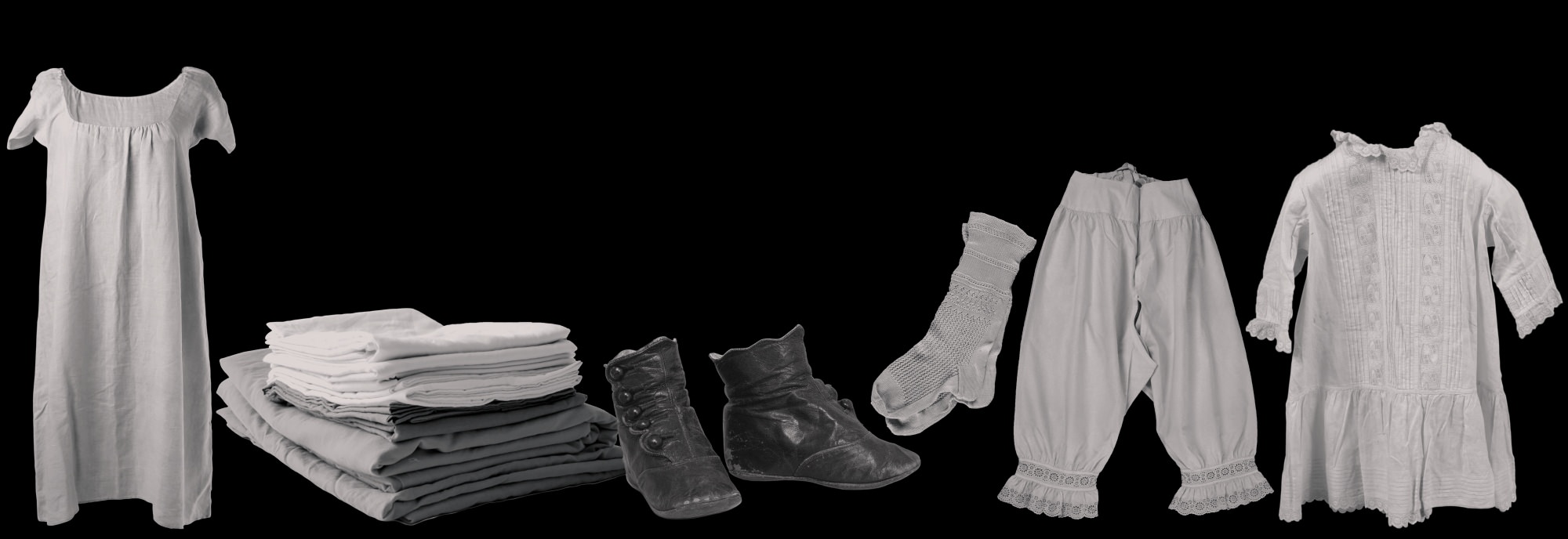
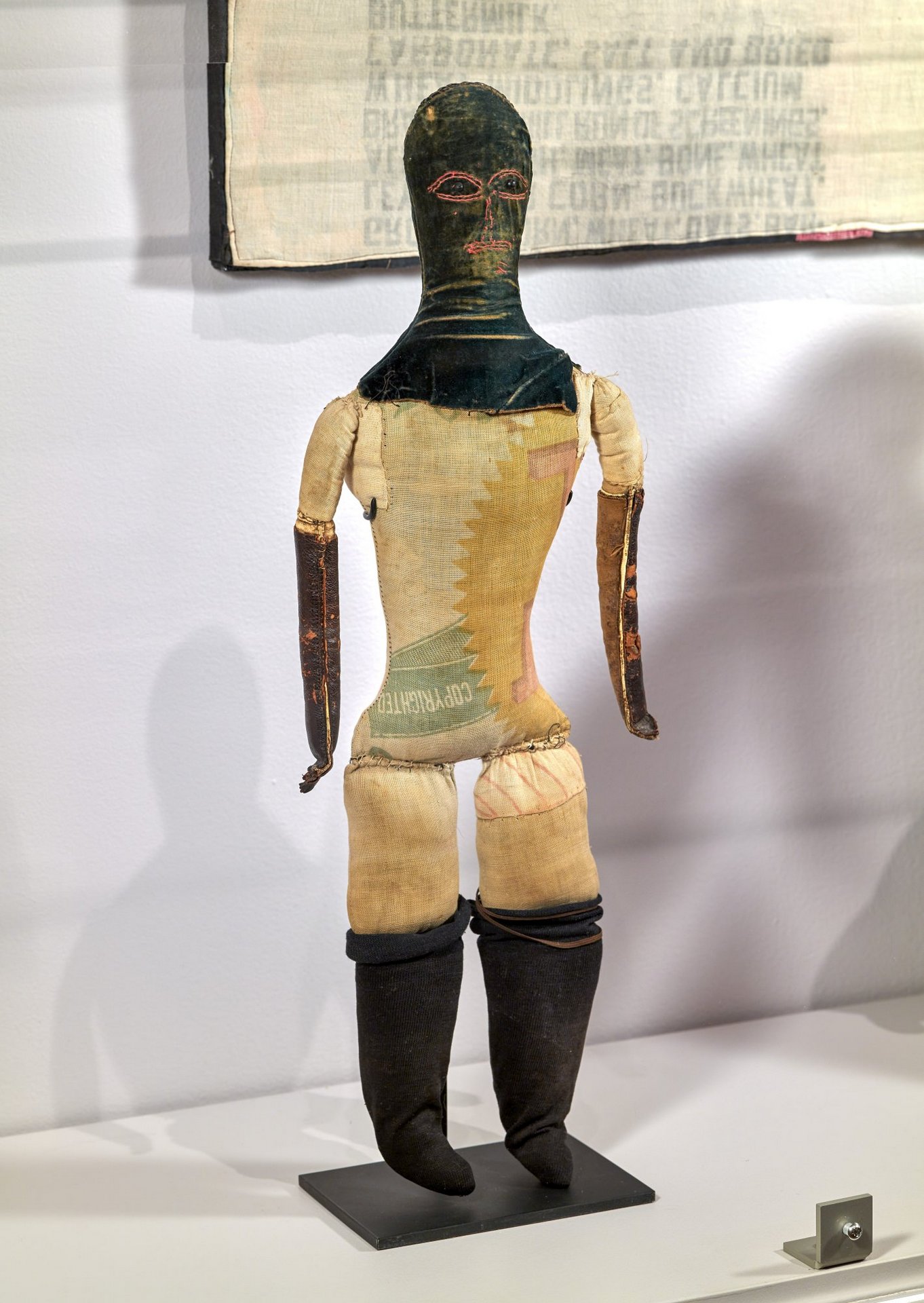
Doll
with feed sack body,
US, late 19th century
Mixed
fabrics, leather
The
doll’s body is made from an early advertising feed sack.

Doll
with striped cape,
US, ca. 1890-1905
Mixed
fabrics
This
doll’s striped cape and matching petticoat hidden beneath her dress were
probably made from a Southern workman’s blanket.

Doll
with clasped hands,
US, ca. 1870-90
Mixed
fabrics, wax
This
doll’s elegant silk dress appears to have been made from the sleeve of a
woman’s garment from the 1870s.
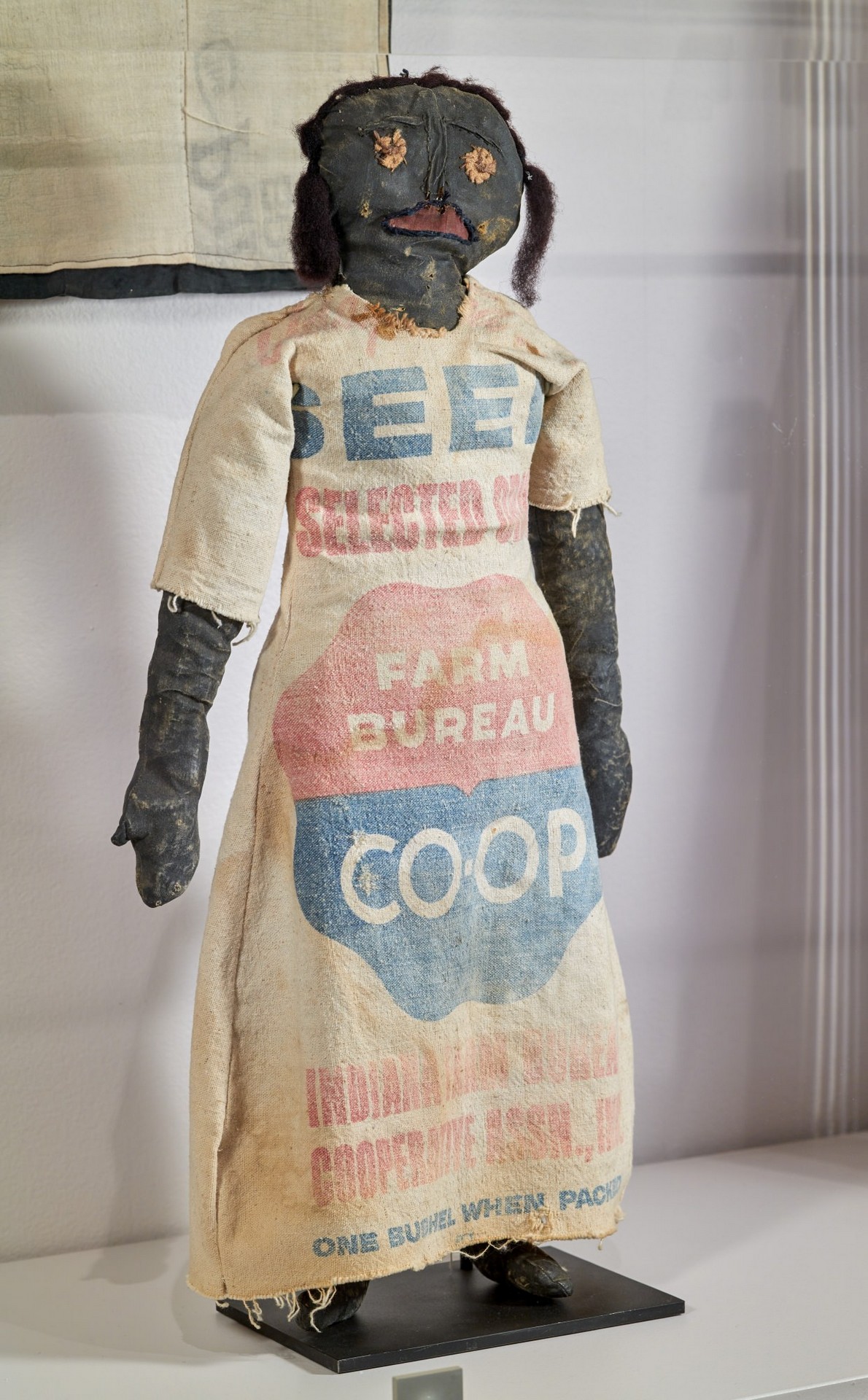
Doll
in feed sack dress,
possibly Indiana, 1900-25
Mixed
fabrics, paint
A
resourceful doll maker made the doll’s dress from a feed sack, positioning the
Farm Bureau Co-op logo to evoke an apron.
Isabelle
Greathouse (1856-1938)
Coconut-head
dolls,
Butler County, Kentucky, ca. 1900-30
Mixed
fabrics, coconut shell
Black
doll maker Isabelle Greathouse took advantage of the natural contours of
coconut shells to create expressive faces.

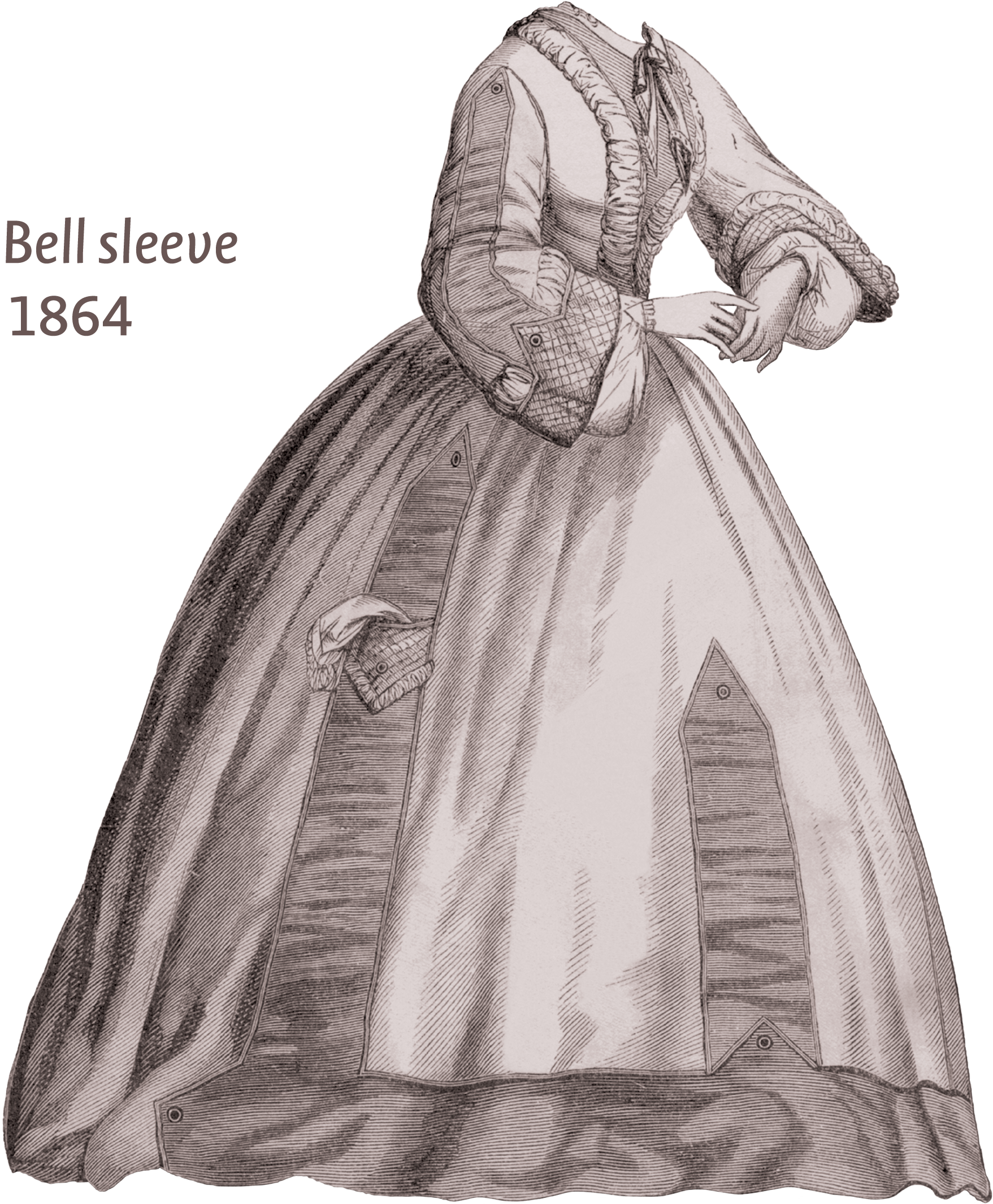
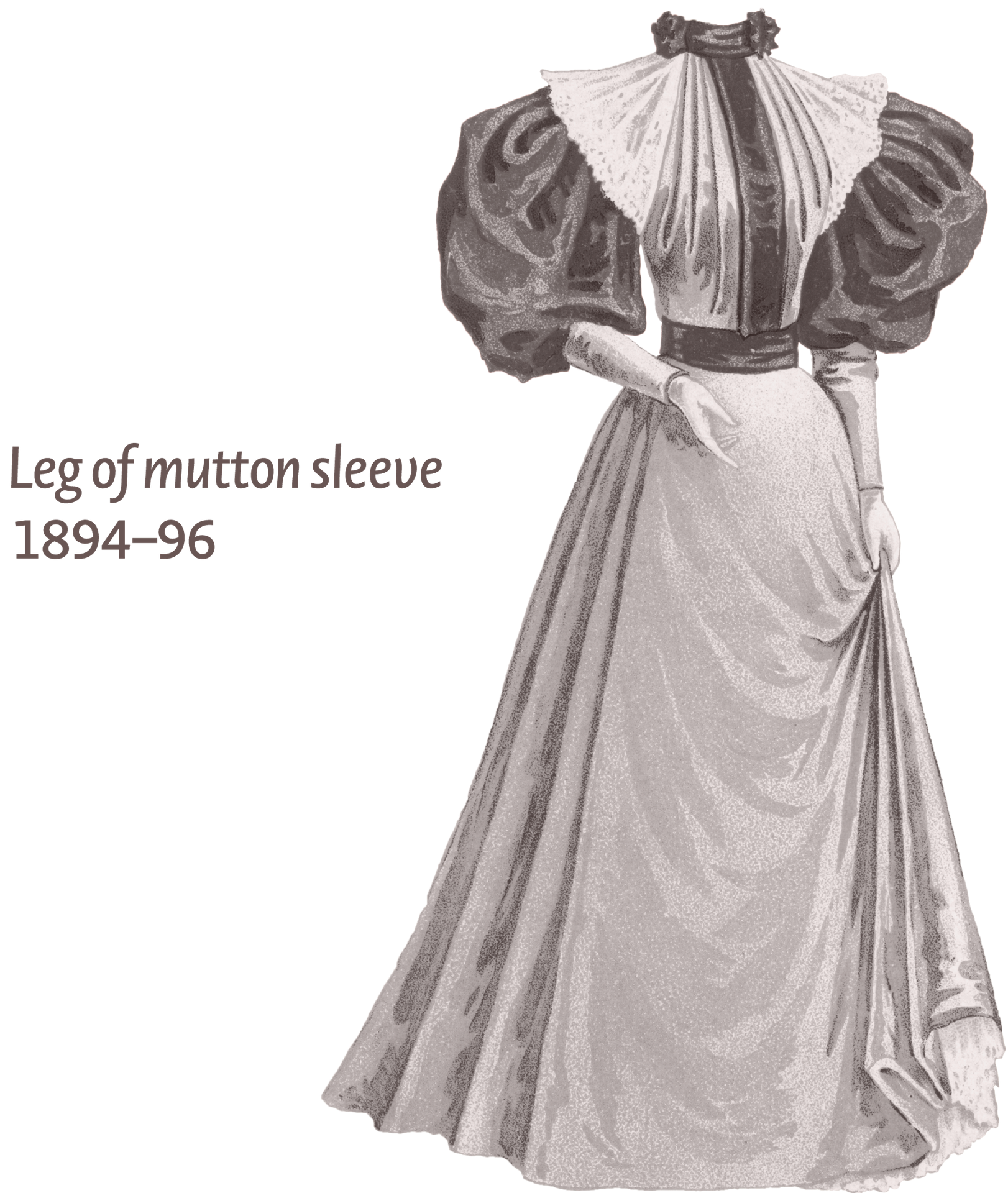

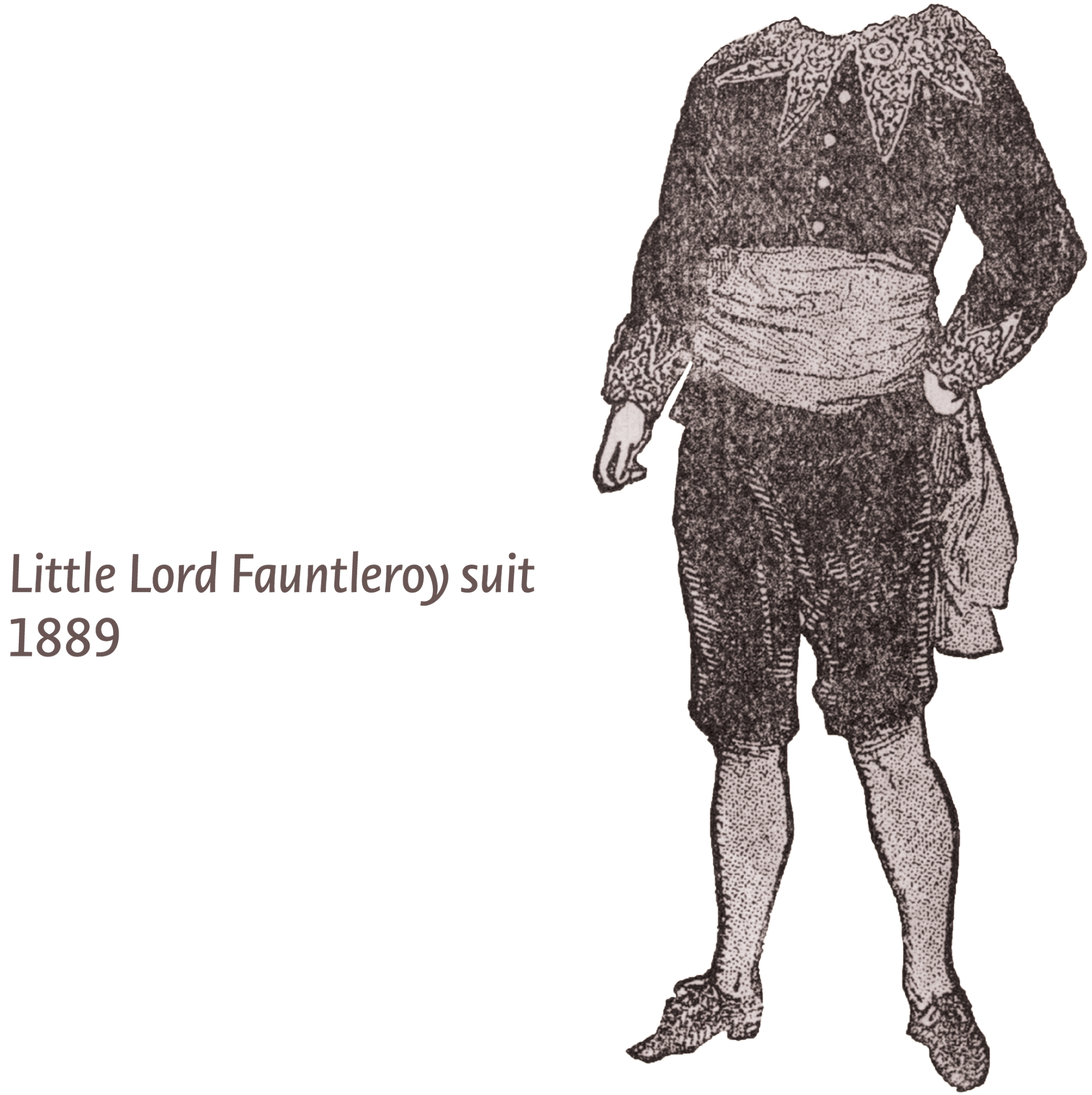
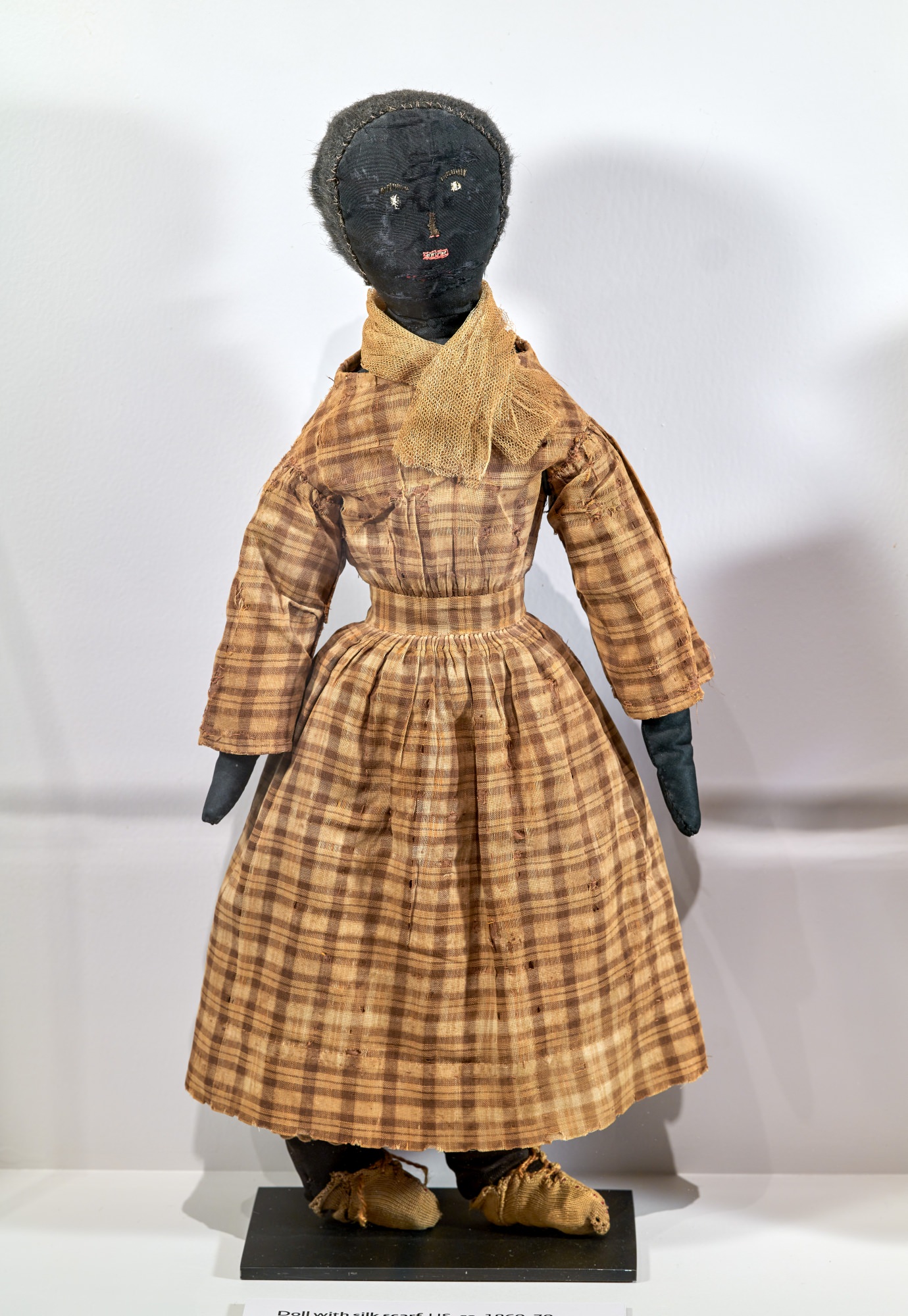
Doll with silk scarf,
US, ca. 1860-70
Mixed fabrics
This early doll wears finely tailored clothing. Her
bell-shaped sleeves, also referred to as pagoda sleeves, reflect a fashion
popular during the 1860s.

Doll with puffed sleeves,
US, ca. 1895
Mixed fabrics
The maker of this doll, stylishly attired in an
eyelet-trimmed gingham dress, emulated the puffy “leg-of-mutton” sleeves that
were fashionable during the 1890s. Images of ladies’ fashions were everywhere,
from popular magazines to paper dolls.
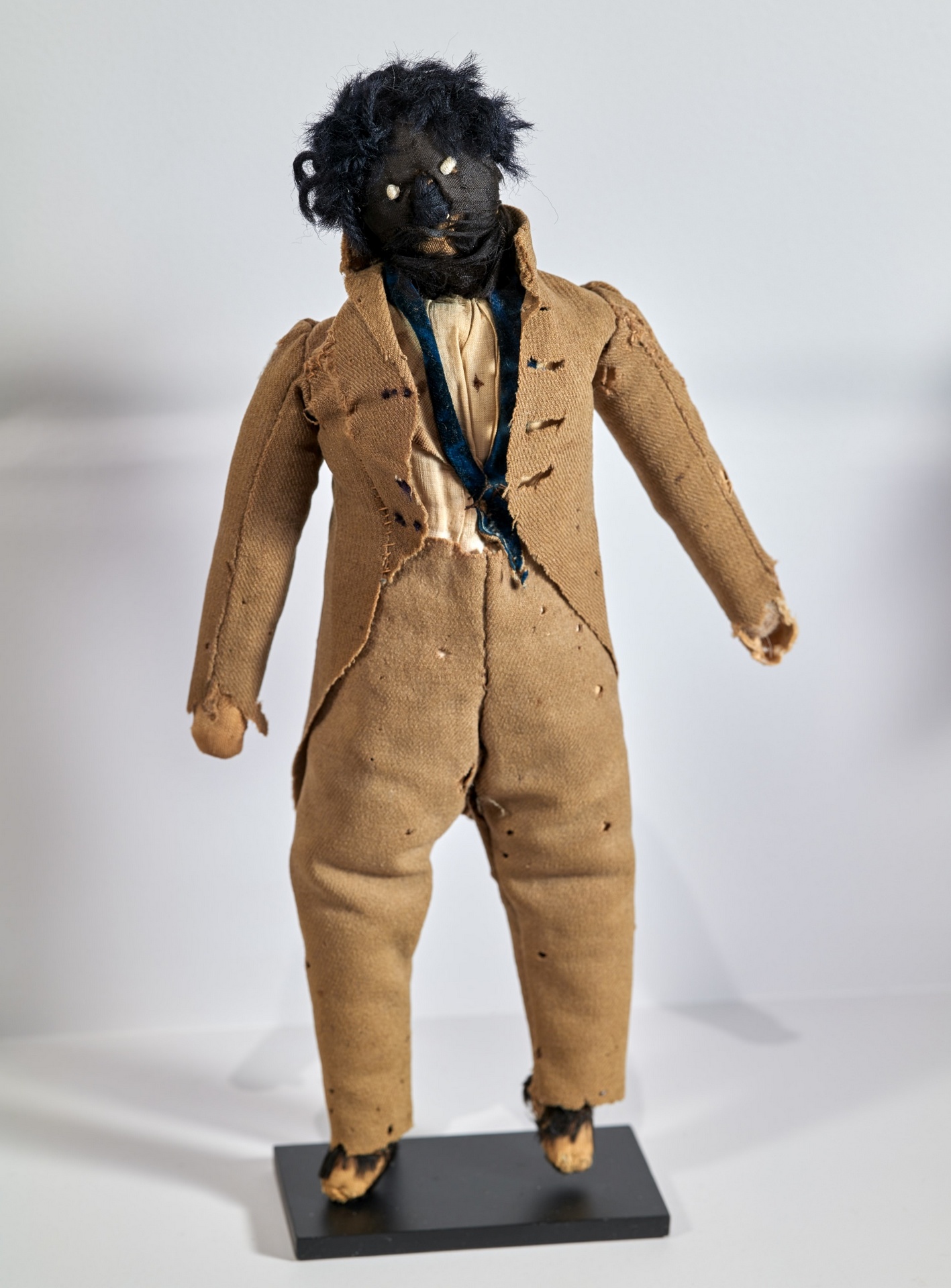
Doll in cutaway coat,
US, ca. 1850-70
Mixed fabrics, cardboard
The dapper gentleman wears formal day attire: a suit
with cutaway coat, waistcoat beneath, and matching trousers.

Doll in velvet suit,
US, ca. 1885-1910
Mixed fabrics, leather
Doll makers also responded to fashions popularized in
illustrated children’s books. Following the publication of Frances Hodgson
Burnett’s Little Lord Fauntleroy in
1885, boys—and dolls—began sporting velvet suits with knee pants, lace collars,
and long hair.
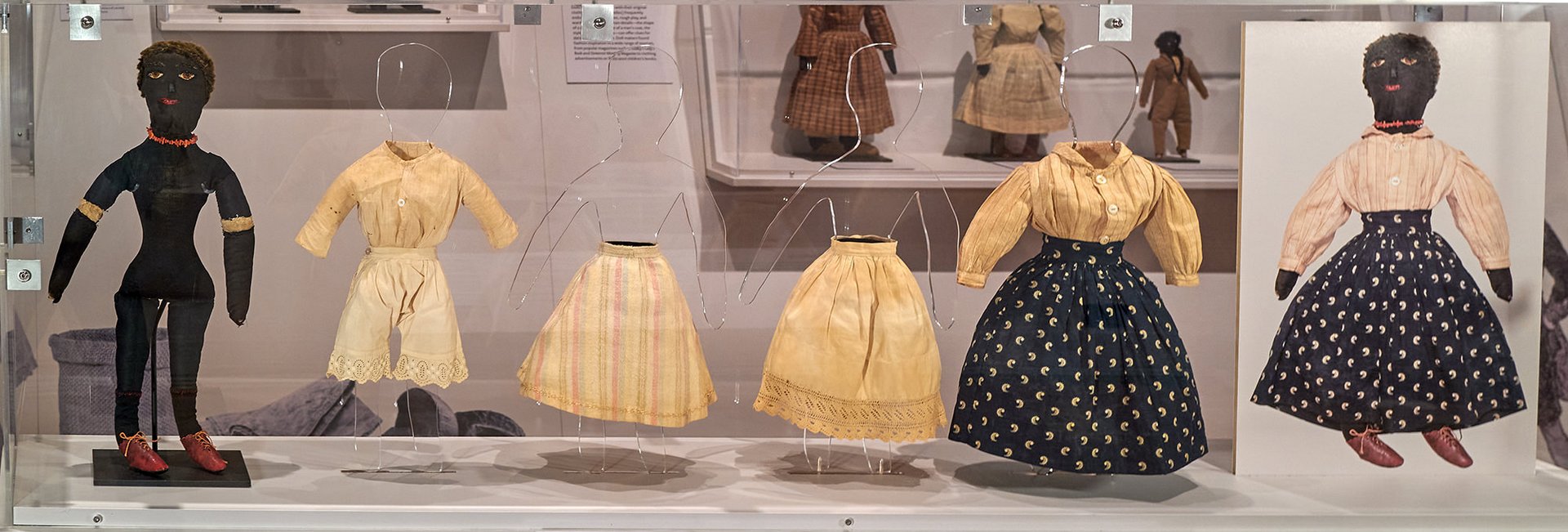

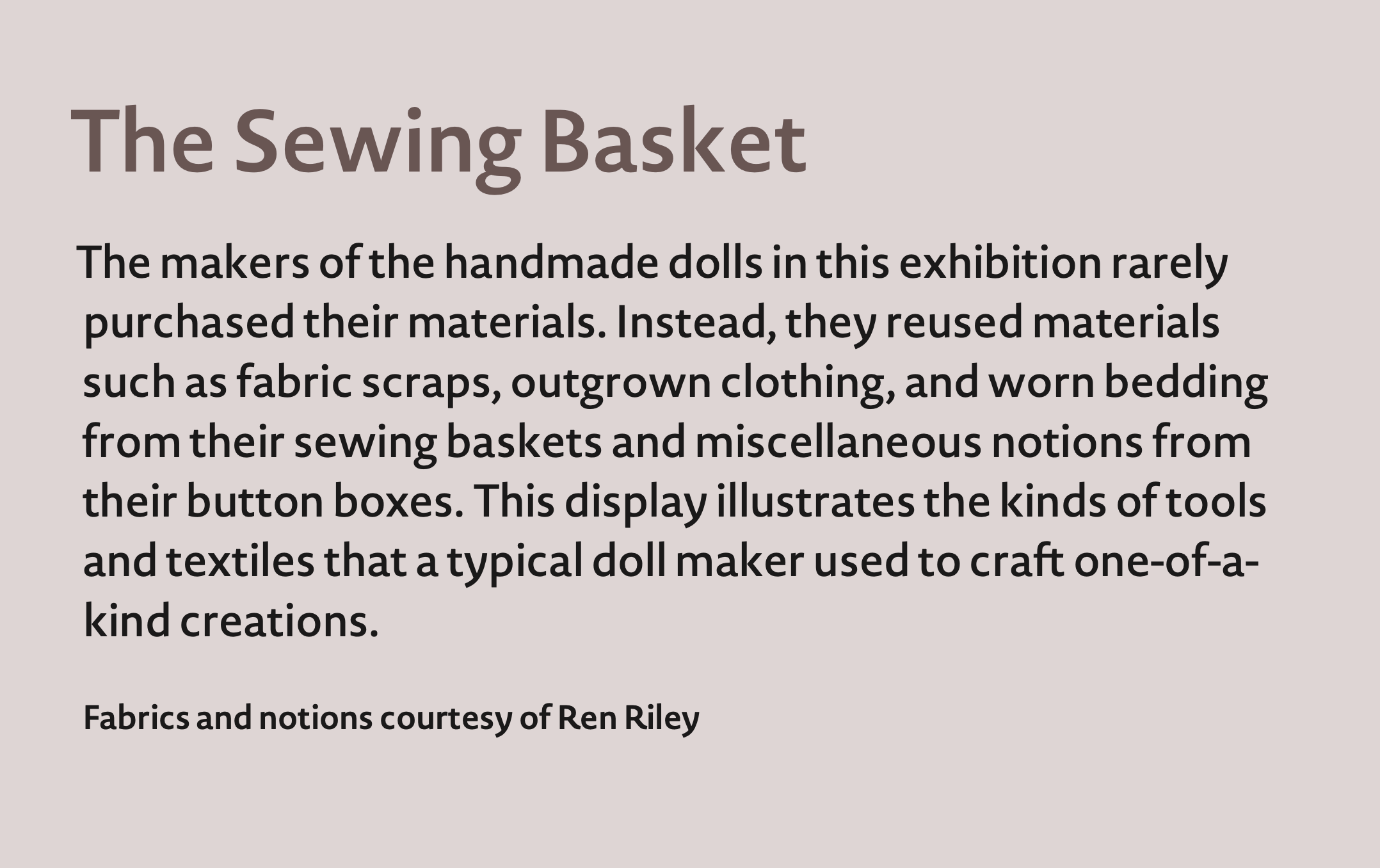
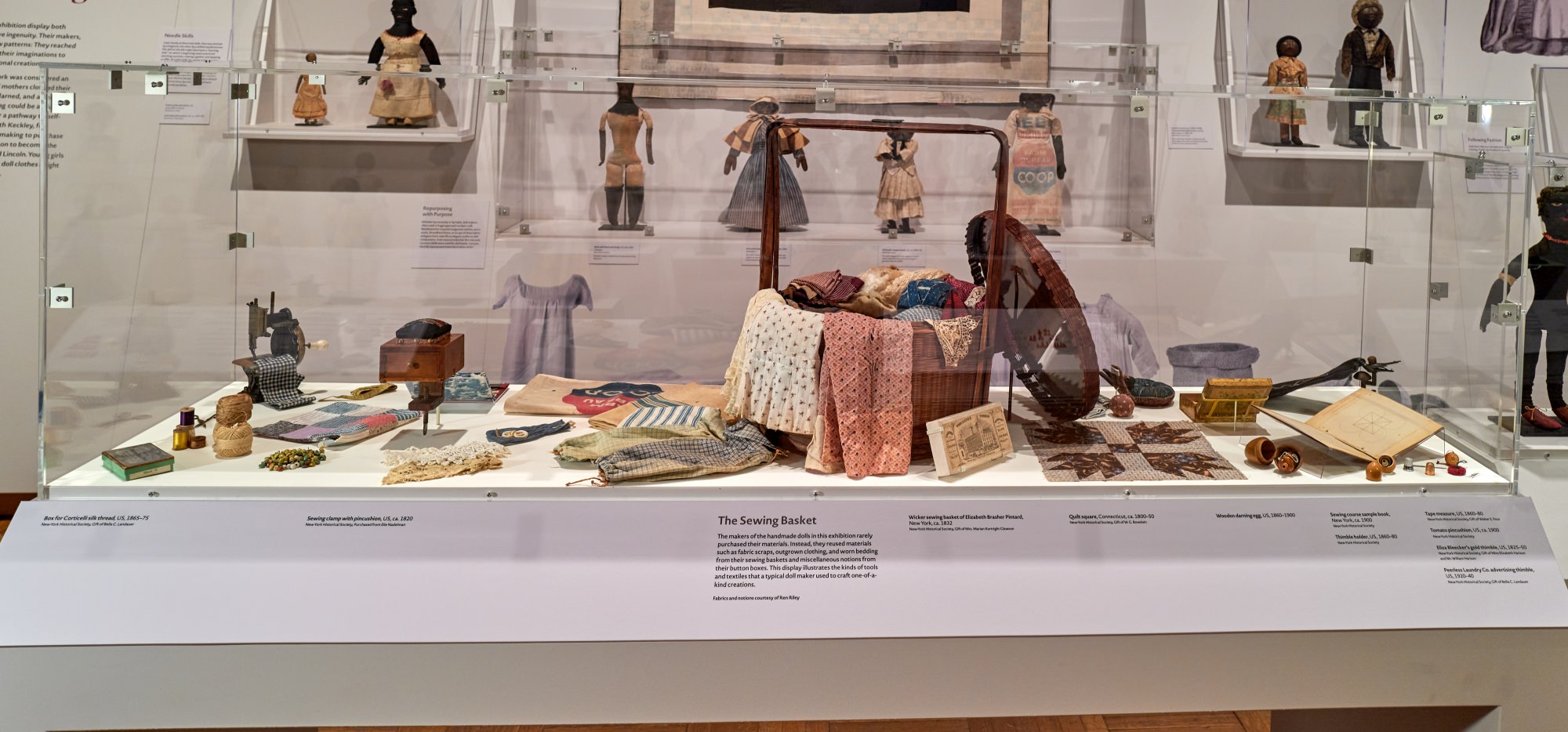
All Dolled Up
Take a good look at the individual dolls. Use of materials, style choices, and creative flourishes reveal tantalizing clues about their anonymous makers. Yet easy answers about age and origin can be elusive due to frequent mending, patching, and re-dressing by their makers and subsequent owners.
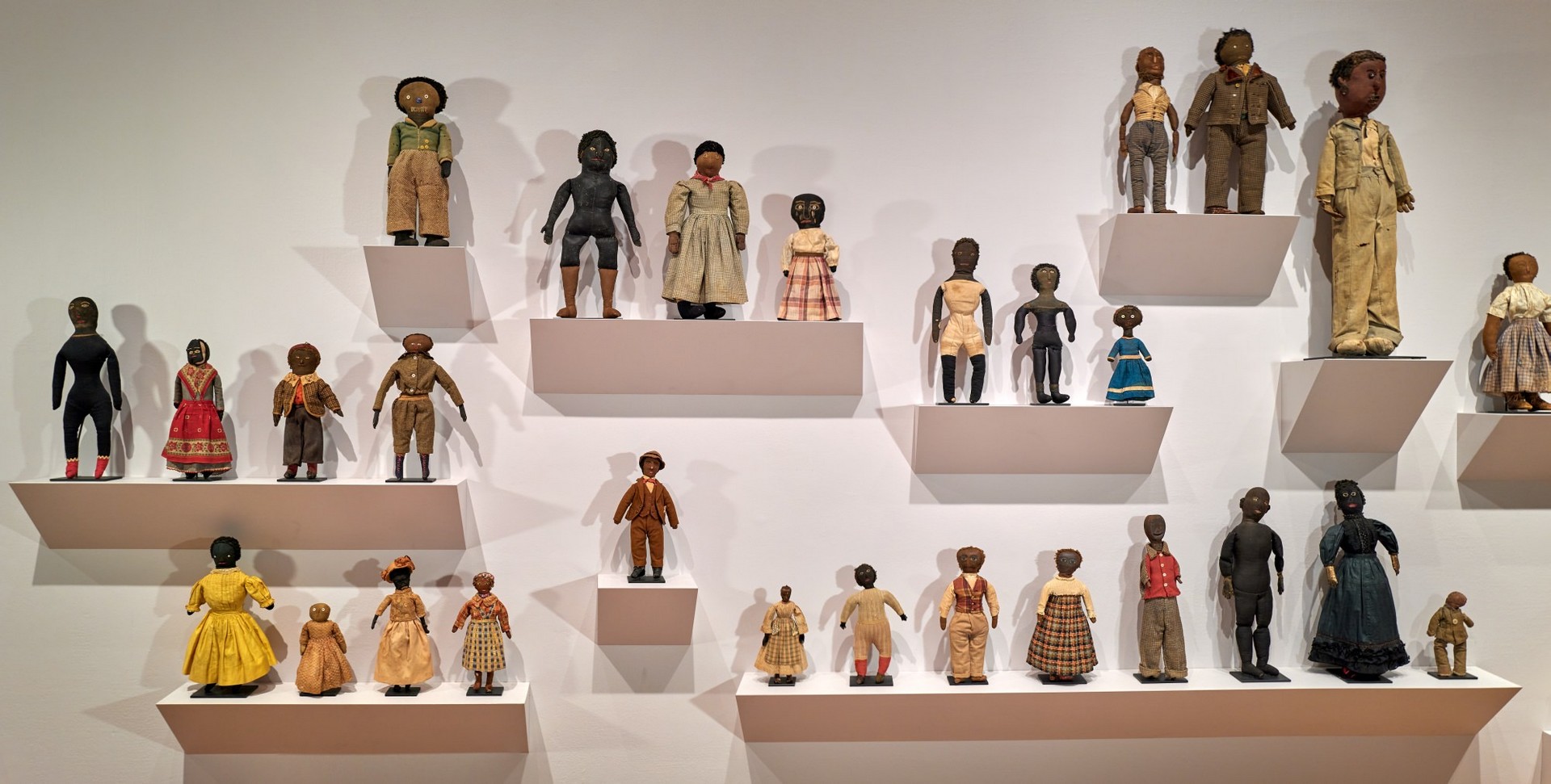

Doll in herringbone trousers, US, ca.
1890-1900
Mixed fabrics, button
s
This hand-sewn doll has hair made of
astrakhan, a looped fabric imitating a luxurious curling fur made from the
skins of young lambs. Astrakhan was fashionable for collars and trim during the
1890s.

Undressed doll,
possibly Maine, late
19th century
Mixed fabrics
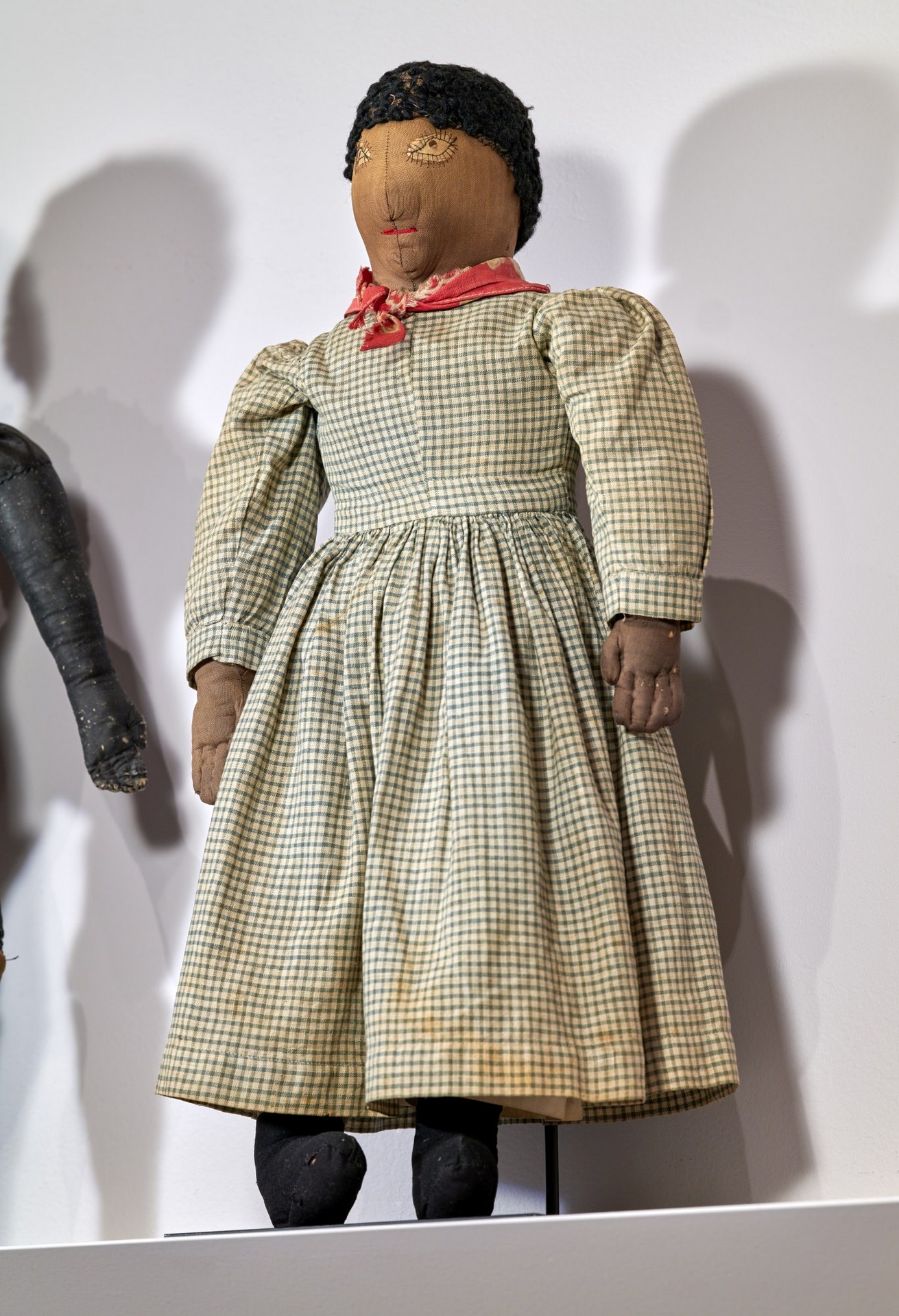
Doll with red bandana,
US, early 20th
century
Cotton
This doll’s expressive eyes were
appliqued, outlined with buttonhole stitches, and highlighted by painted
pupils.

Doll with plaid skirt,
US, late
19th/early 20th centuries
Mixed fabrics, suede
White stuffing showing through rips in
the doll’s sateen face give the impression that she’s crying. Her downturned
mouth accentuates the look of sadness.
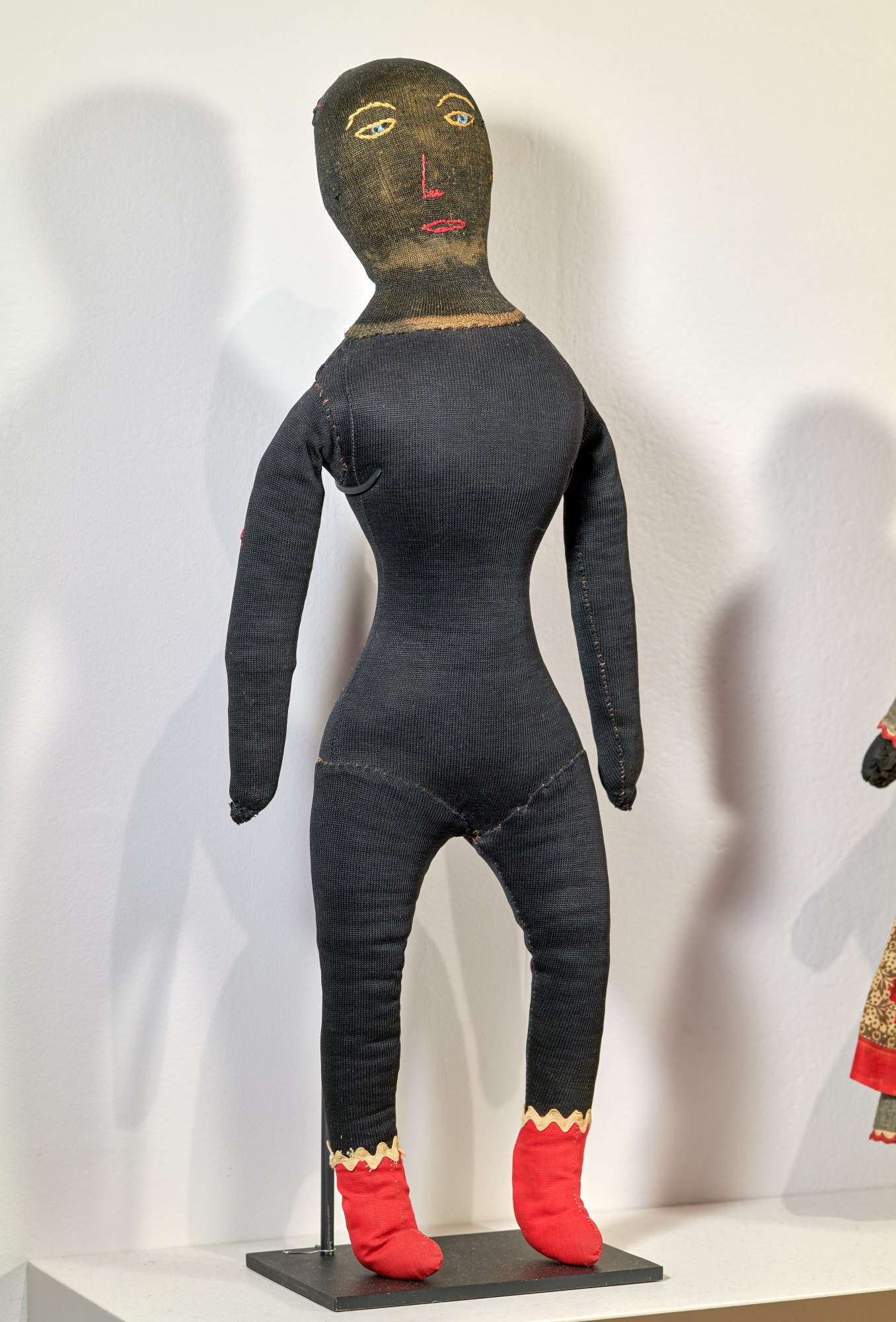
Doll with red boots,
US, late 19th
century
Mixed fabrics, glass
This unusual blue-eyed doll has a
shapely body hand-stitched from silk stockings.

Doll with red shoulder scarf, US,
1880-1930
Mixed fabrics with manufactured doll head
This doll started out as a white doll:
Its head is covered by black fabric with embroidered facial features,
concealing the manufactured white doll face beneath. Its apron and shoulder
scarf were cut from a bandana.

Doll with lace collar,
US, ca. 1885-90
Mixed fabrics
The crisp symmetrical lines of its body
suggest that the doll body may have been cut from a pattern, but the
embroidered face is clearly original.

Doll in tweed outfit,
US, late
19th/early 20th centuries
Mixed fabrics

Doll in three-piece suit, US, late 19th
century
Mixed fabrics, leather, mother of pearl,
paint

Doll in yellow dress,
Castine, ME, 1904
Mixed fabrics, mother of pearl
Handmade Black dolls with histories of
ownership are rare. This example has an accompanying note indicating that it
was made for four-year-old Sargent Wood Ricker by his grandmother, Ariadne
Adams Ricker. The Rickers were a white family from Castine, Maine.
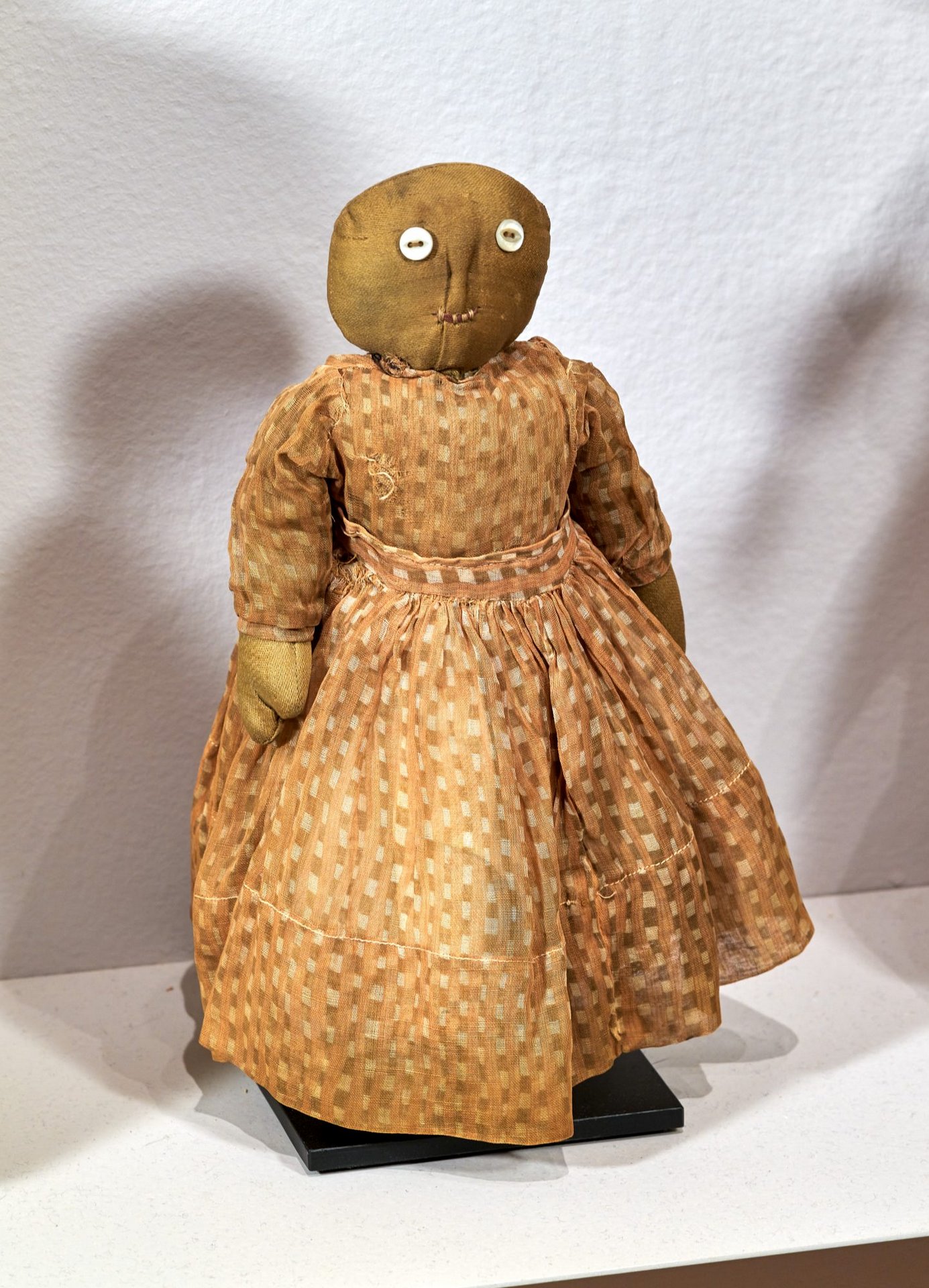
Doll with button eyes,
US, 1908
Mixed fabrics, metal, mother of pearl
Like the doll to its left, this one was
a gift from a grandmother. A tag with the doll indicates that it was made for
Marian by her “Grandma Washington.” Grandma Washington used a sewing machine to
stitch the cotton body and sateen head as well as the cotton dress and
underclothes.

Doll with straw hat,
US, 1900-25
Mixed fabrics
With her beribboned straw hat,
netting-covered bodice, and dress skirt, this doll appears ready to head to
church.
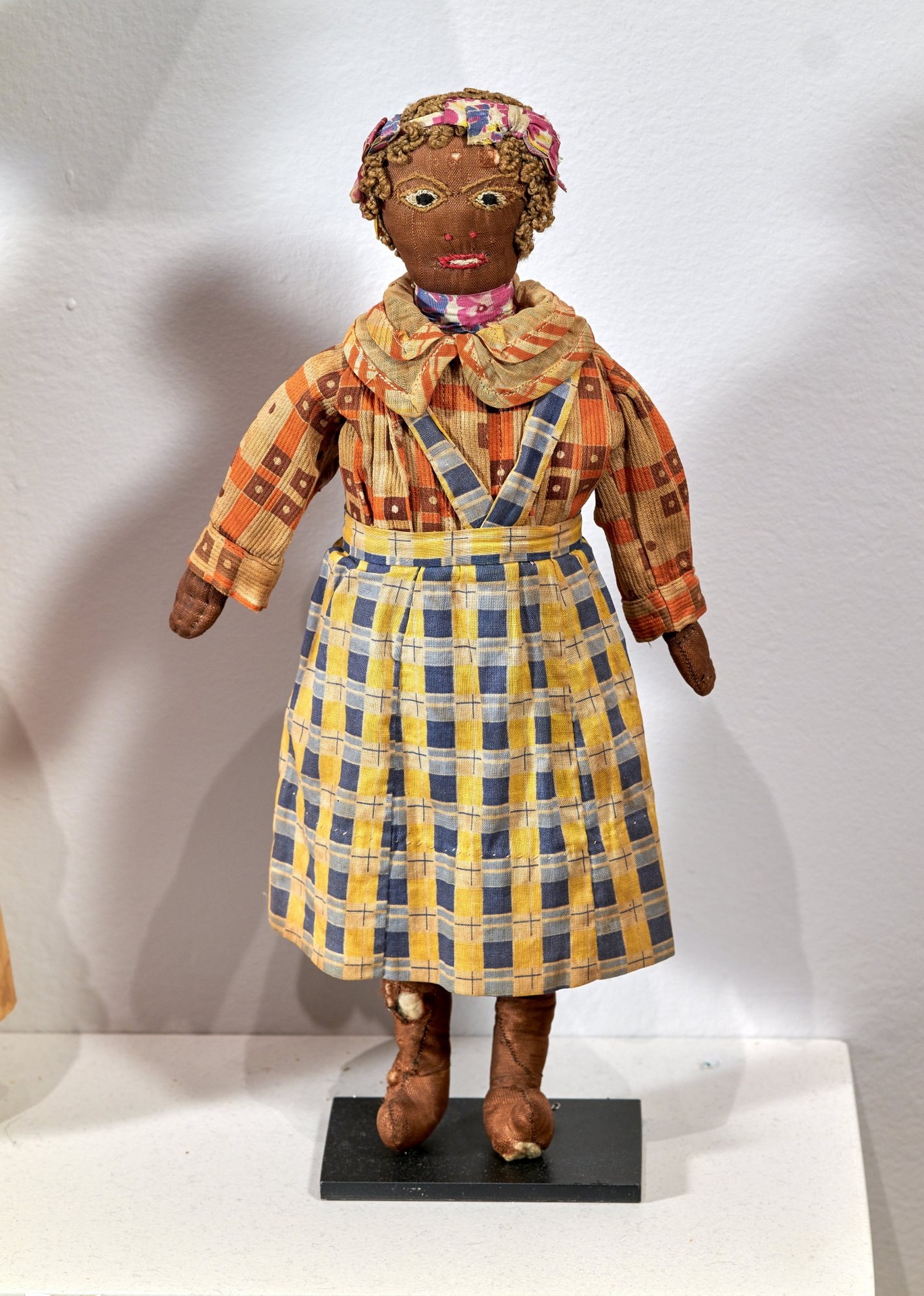
Doll with plaid apron,
US, 1920-40
Mixed fabrics
The doll’s cotton day dress, collar, and
apron are made from different patterned 1920s fabrics. She is dressed like a
well-to-do housewife of the era.
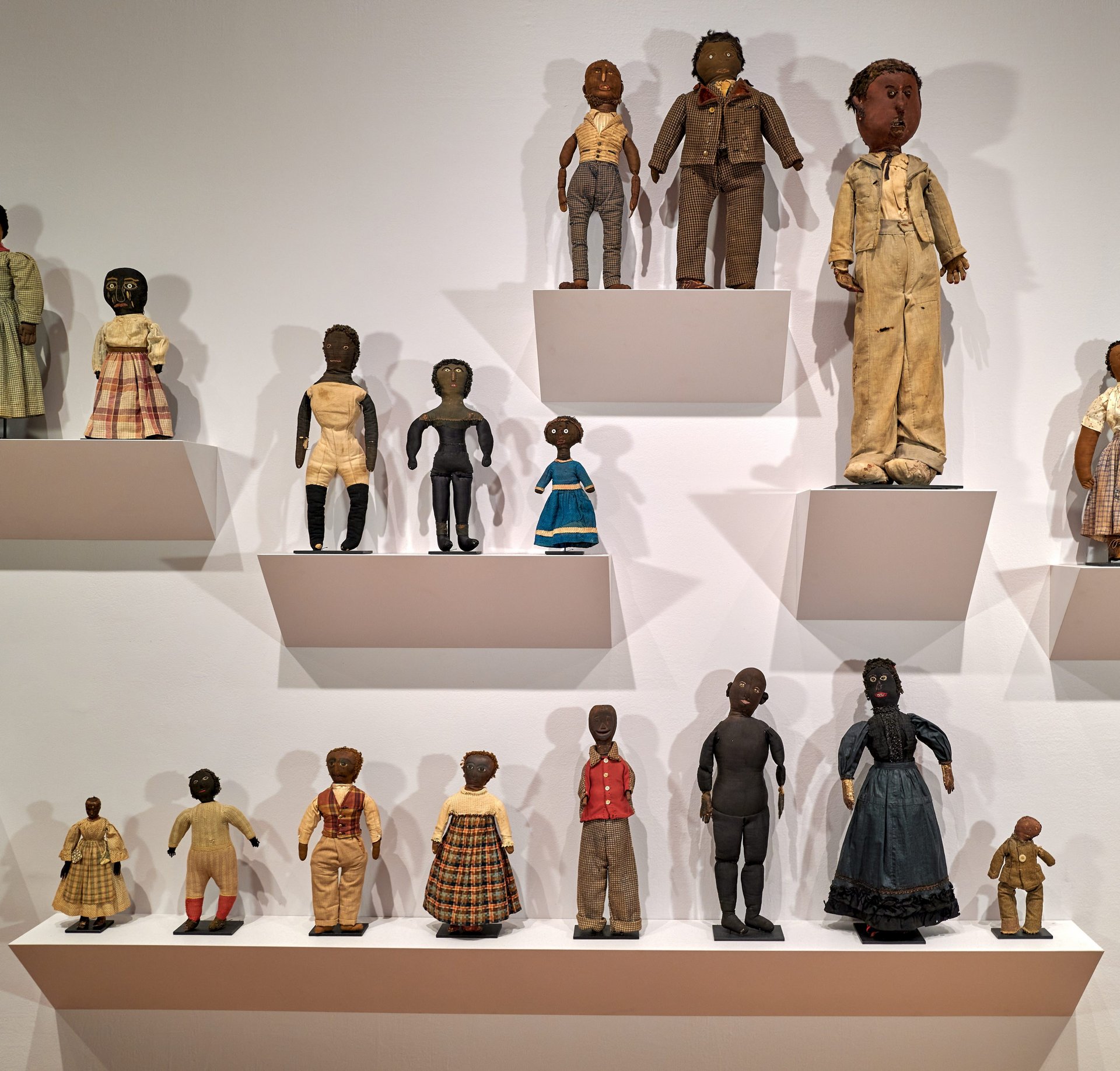

Bearded doll,
US, ca. 1850-70
Mixed fabrics, steel, mother of pearl
This bearded gentleman sports an elegant
waistcoat and pleated linen shirt—and probably once had a cravat and coat to
complete the outfit.

Doll in houndstooth suit, probably Pennsylvania,
ca. 1880-90
Mixed fabrics, animal fur, leather metal
This well-dressed man wears a
three-piece houndstooth suit with velvet collar, accessorized with a silk
handkerchief and a metal watch chain.
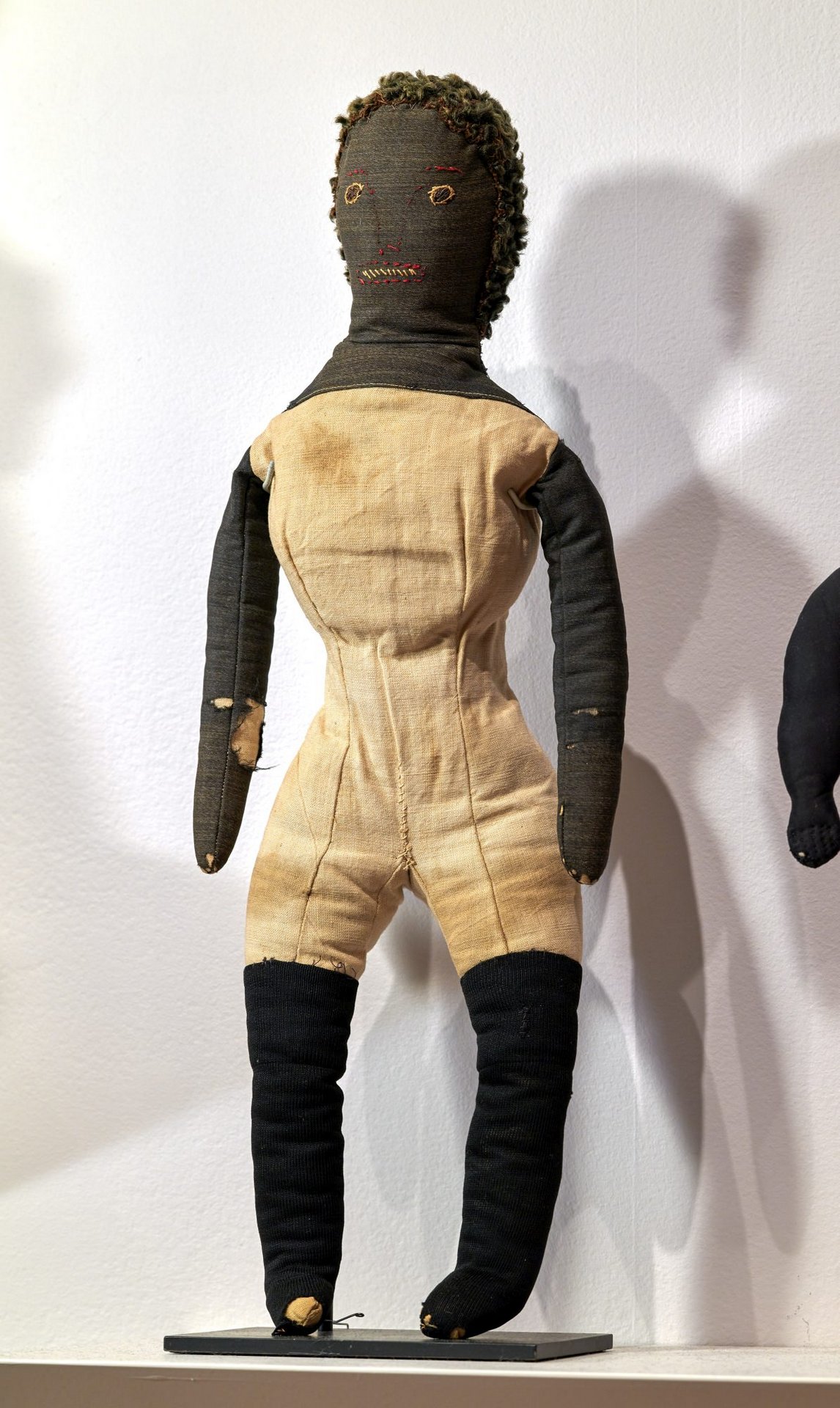
Undressed doll,
US, late 19th century
Mixed fabrics
The crisp symmetrical lines of its body
suggest that the doll body may have been cut from a pattern, but the
embroidered face is clearly original.

Undressed doll,
US, late 19th century
Mixed fabrics
This doll’s silhouette is reminiscent of
the figures that African American quiltmaker Harriet Powers, who was born into
slavery in rural Georgia, stitched onto her bold pictorial quilts in the 1880s
and ‘90s.
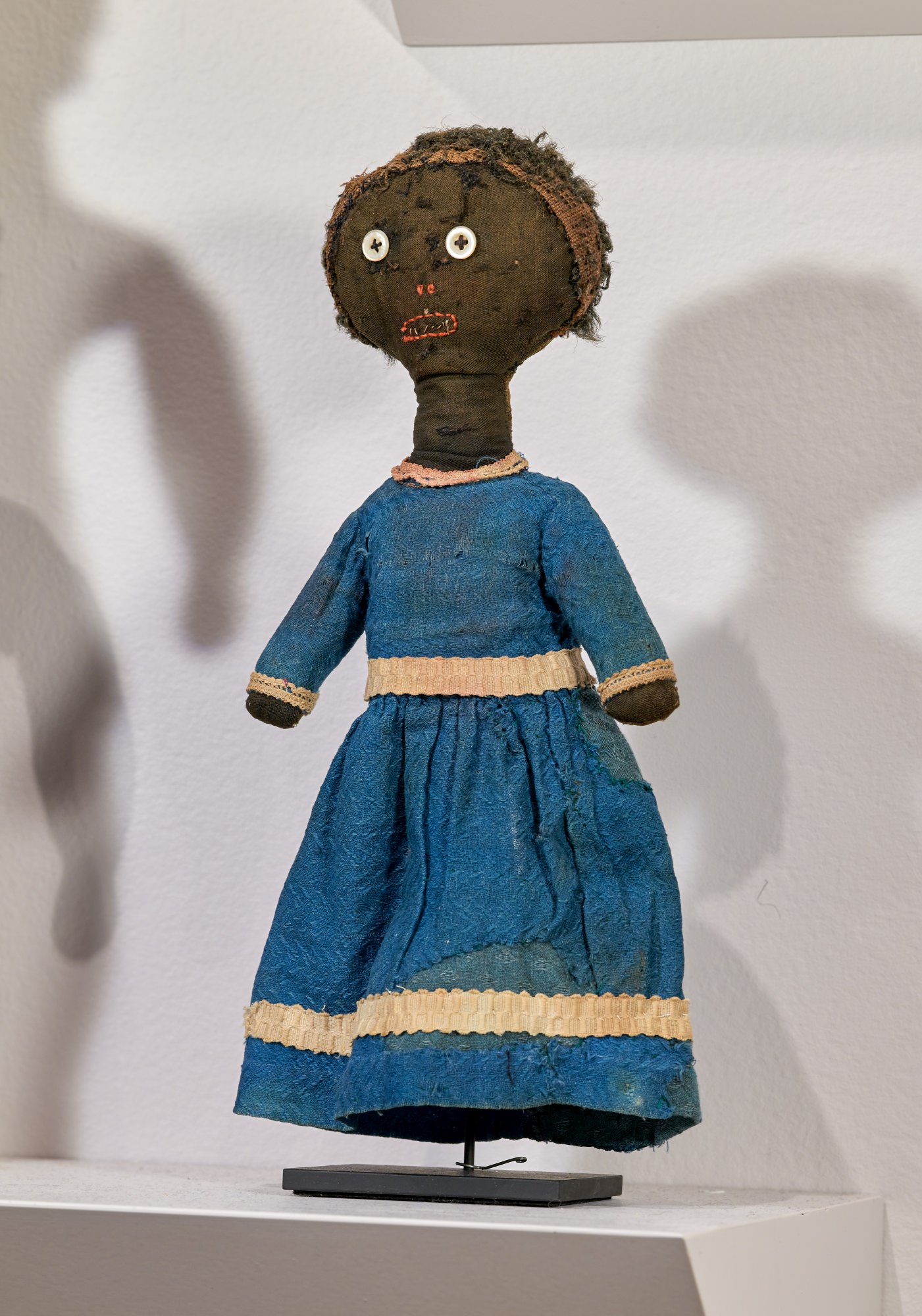
Doll in blue dress,
US, late 19th/early
20th centuries
Mixed fabrics, mother of pearl, straw
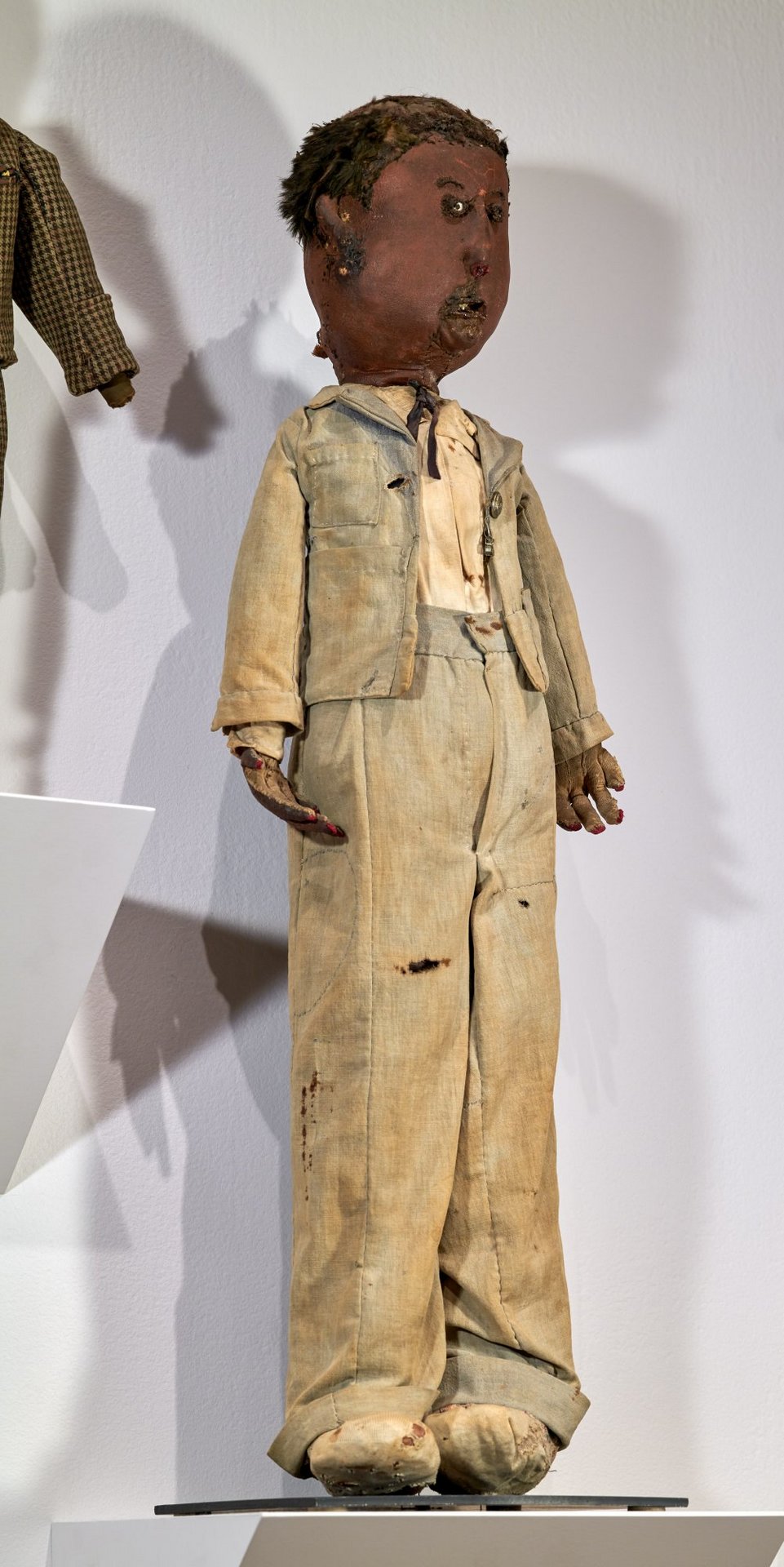
Large doll in jacket and trousers,
possibly Alabama, ca. 1930-40
Mixed fabrics, animal fur and teeth,
metal armature, mother of pearl
Inscribed “Frank Brady” in ink on back
of shirt
This commanding doll was made from
painted canvas and metal scraps and clothed with fabrics repurposed from drapes
or bed coverings. The maker used animal fur and teeth for facial details.

Doll in short sleeve blouse, US, ca.
1890-1910
Mixed fabrics, leather

Doll in mourning dress, possibly Cape
Cod, MA,
ca. 1870-90
Cotton, twine, mother of pearl
Well into the 1900s, middle-class women
commemorated the loss of loved ones by wearing mourning attire for prescribed
periods of time based on the nearness of the relationship and the time since
death. This doll wears a dress made from black and white printed fabric,
usually considered suitable for “half-mourning.”

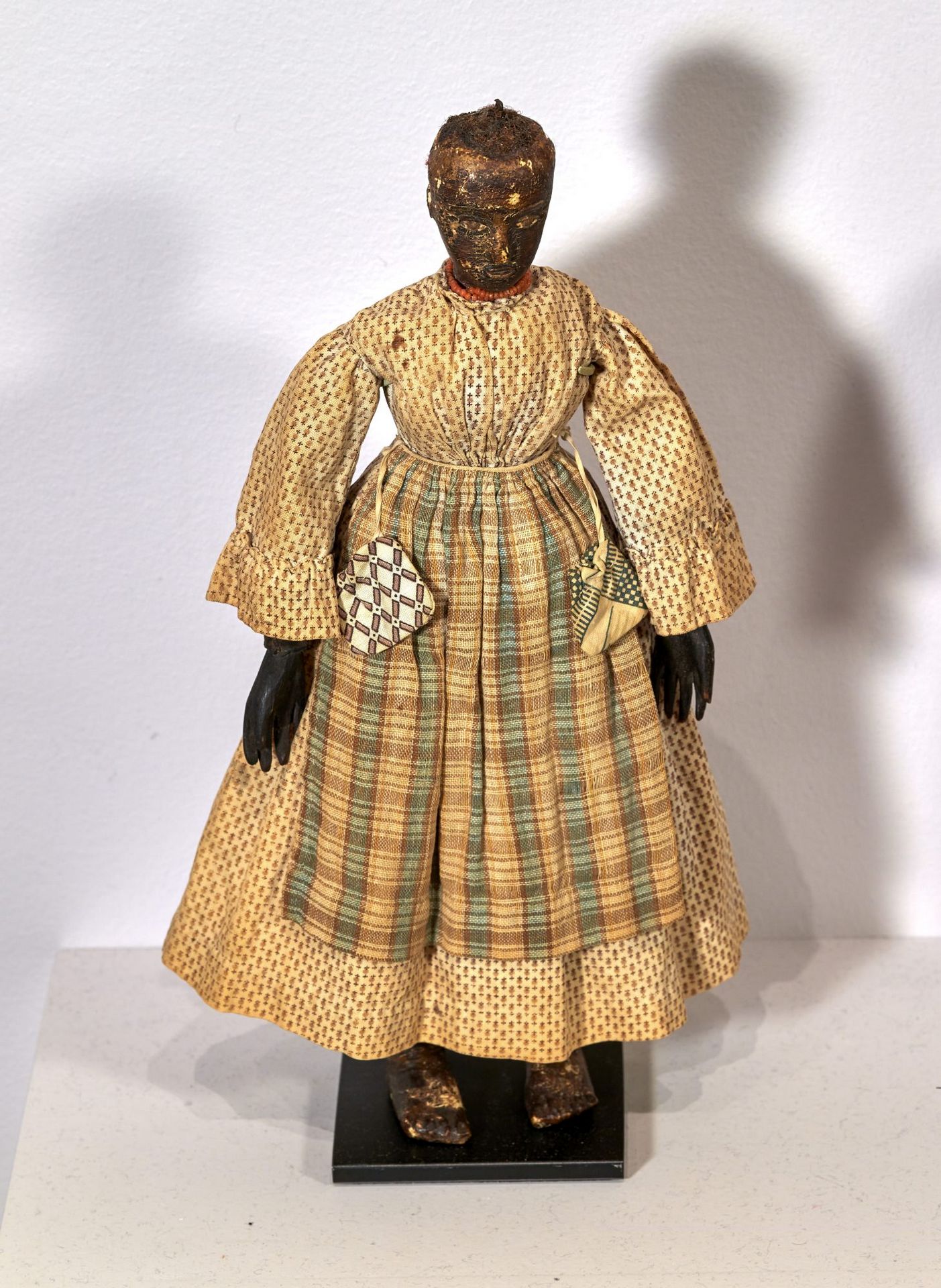
Doll with checked apron,
US, ca. 1850-70
Wood, mixed fabrics, leather, coral,
metal
This early doll has a wooden torso,
cotton-stuffed head, and arms made from old leather gloves.Two pockets hang
over the checked apron.
The
doll's coral necklace may have been intended to ward off bad luck. Because of
its self-renewing properties, coral is also associated with healing and
protection.
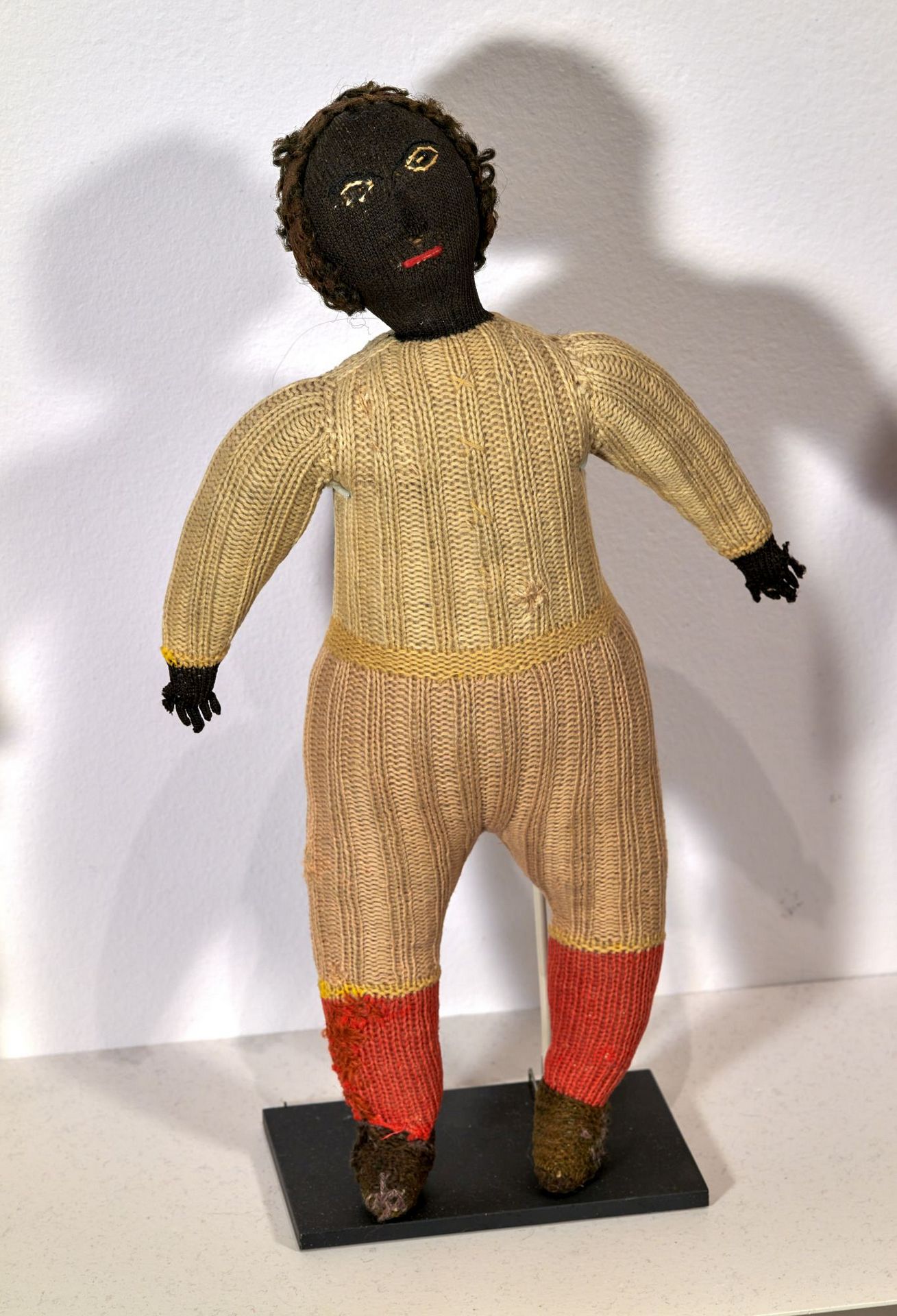
Knitted doll,
US, ca. 1900
Mixed fabrics

Pair of dolls with painted faces,
possibly Cape Cod, MA,
ca. 1890-1910
Mixed fabrics, leather, paint
Probably intended to represent a husband
and wife, this well-dressed pair have expressive painted faces.
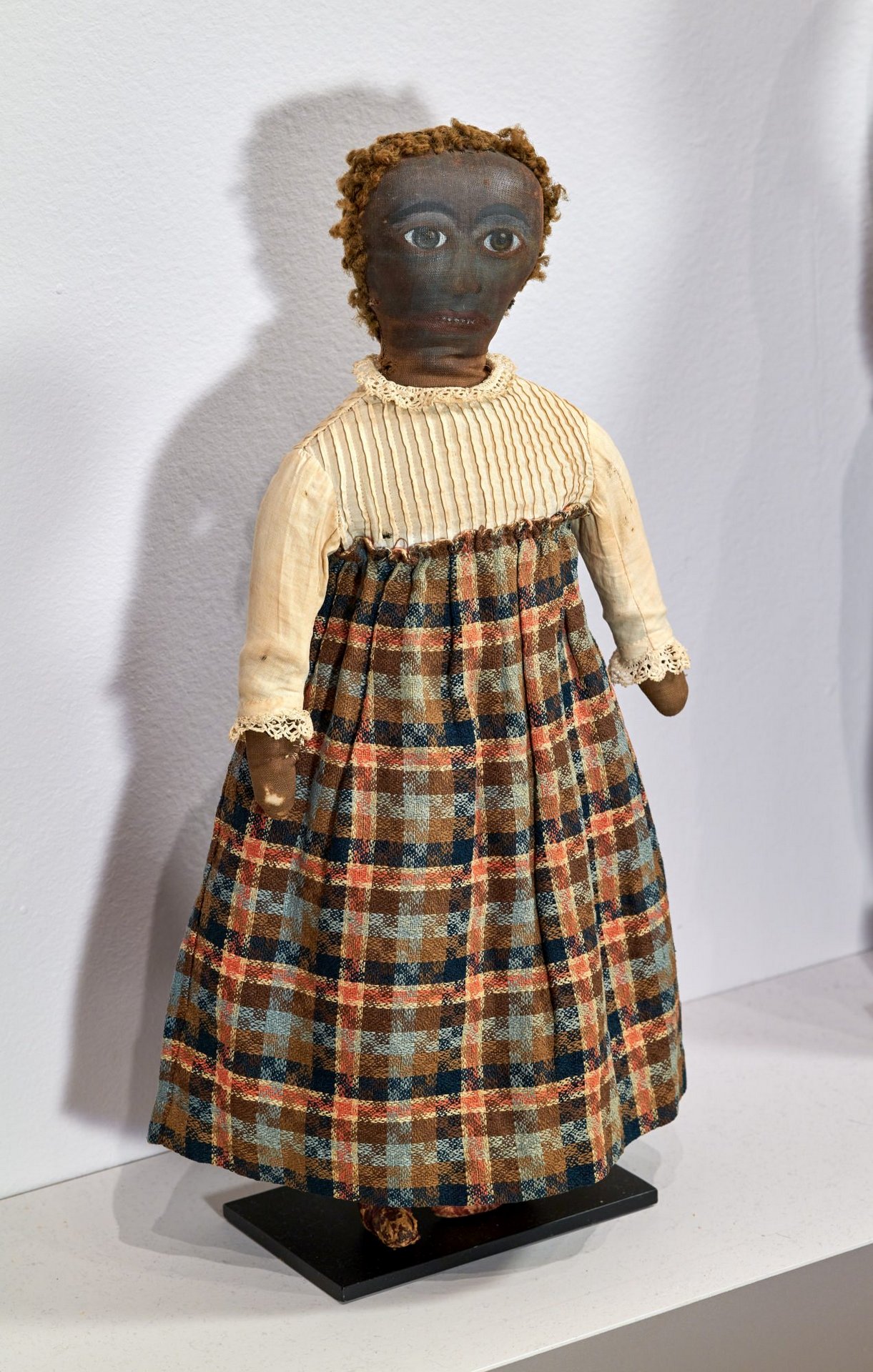
Pair of dolls with painted faces,
possibly Cape Cod, MA,
ca. 1890-1910
Mixed fabrics, leather, paint
Probably intended to represent a husband
and wife, this well-dressed pair have expressive painted faces.

Doll in red shirt,
possibly Kentucky,
early 20th century
Wood, mixed fabrics, paint

Doll with prominent ears,
US, late 19th
century
Cotton, leather

Doll in beaded gown,
US, ca. 1895
Mixed fabrics, leather, glass, paper
The doll’s elegant black outfit suggests
mourning attire. Her beaded bodice appears to have been made from a real bodice
and the black silk ruffle at the skirt’s hem may be from the same garment.
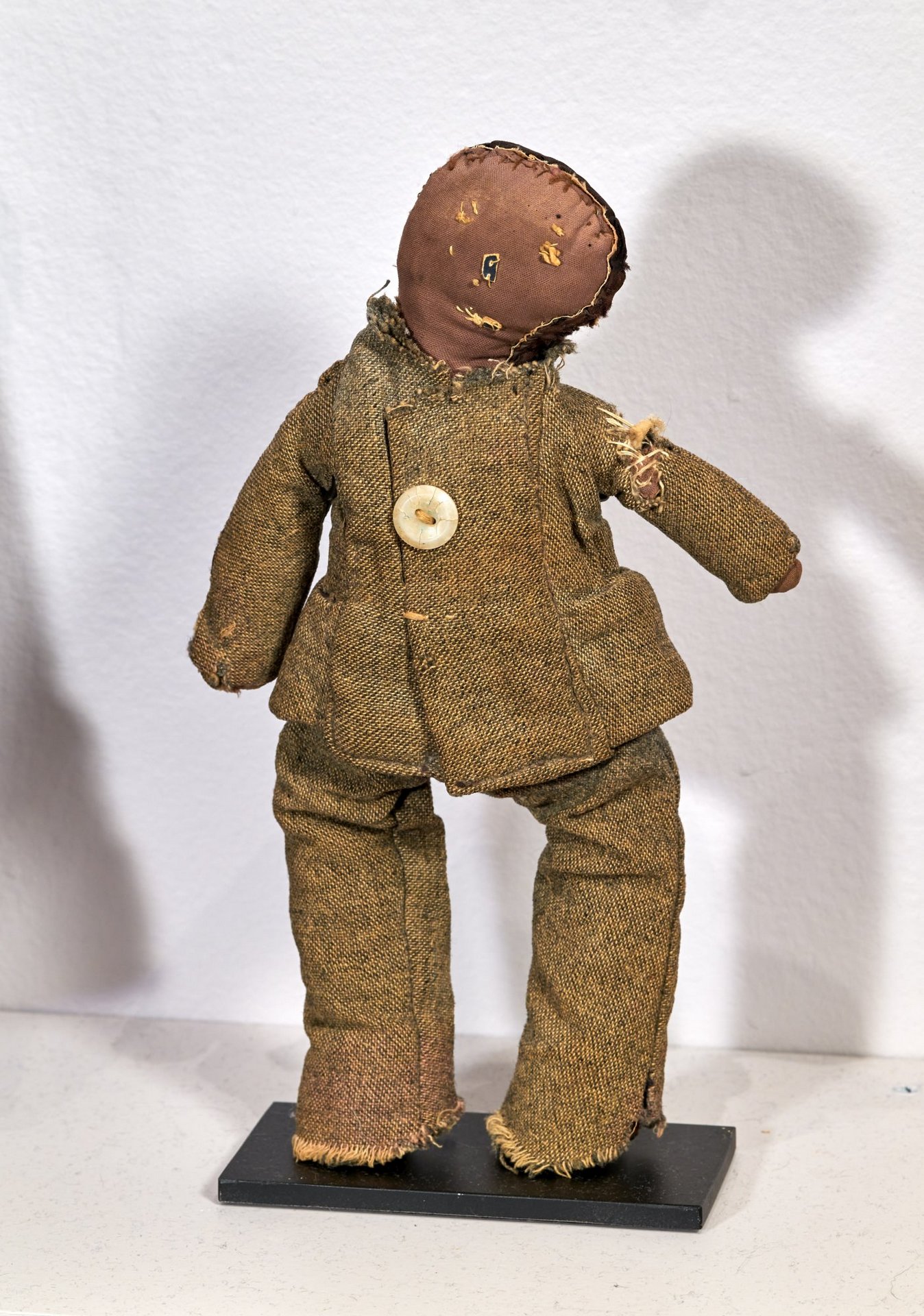
Doll in buttoned jacket,
US, early 20th
century
Mixed fabrics, paper
This doll
wears a crudely made flannel suit with one large button. Its facial features
are rendered with stitched-on paper, only traces of which remain.

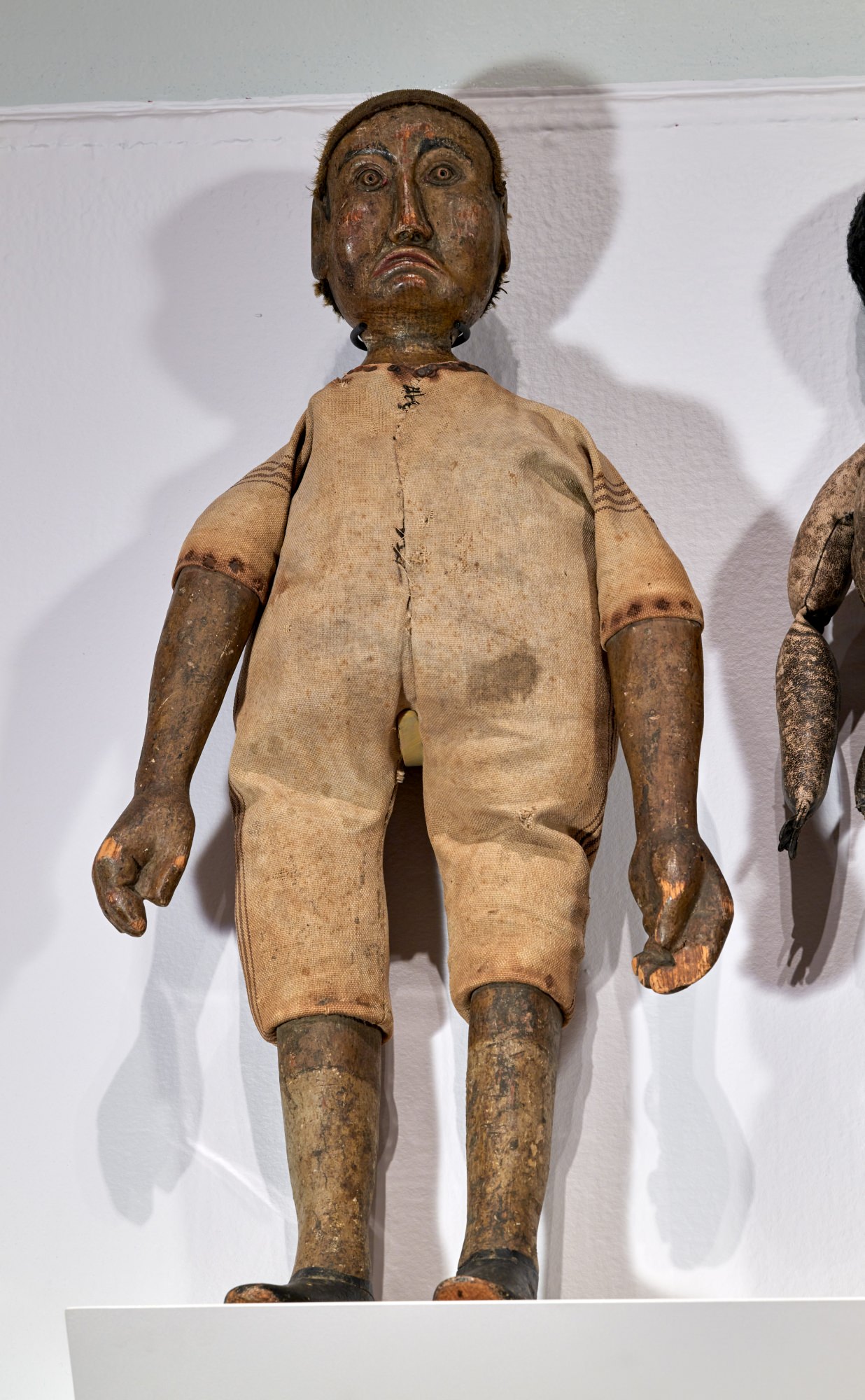
Doll with carved wooden face,
US, ca.
1865-75
Wood, mixed fabrics, straw

Leather doll,
US, late 19th century
Leather, wool

Doll with striped pants,
possibly
Kentucky,
ca. 1900-25
Mixed fabrics, mother of pearl, glass
Made of colorful vertical pieces of
fabric, the doll’s pants bring to mind the tradition of strip quilting.

Doll in plaid suit,
US, ca. 1900-25
Mixed fabrics, animal fur
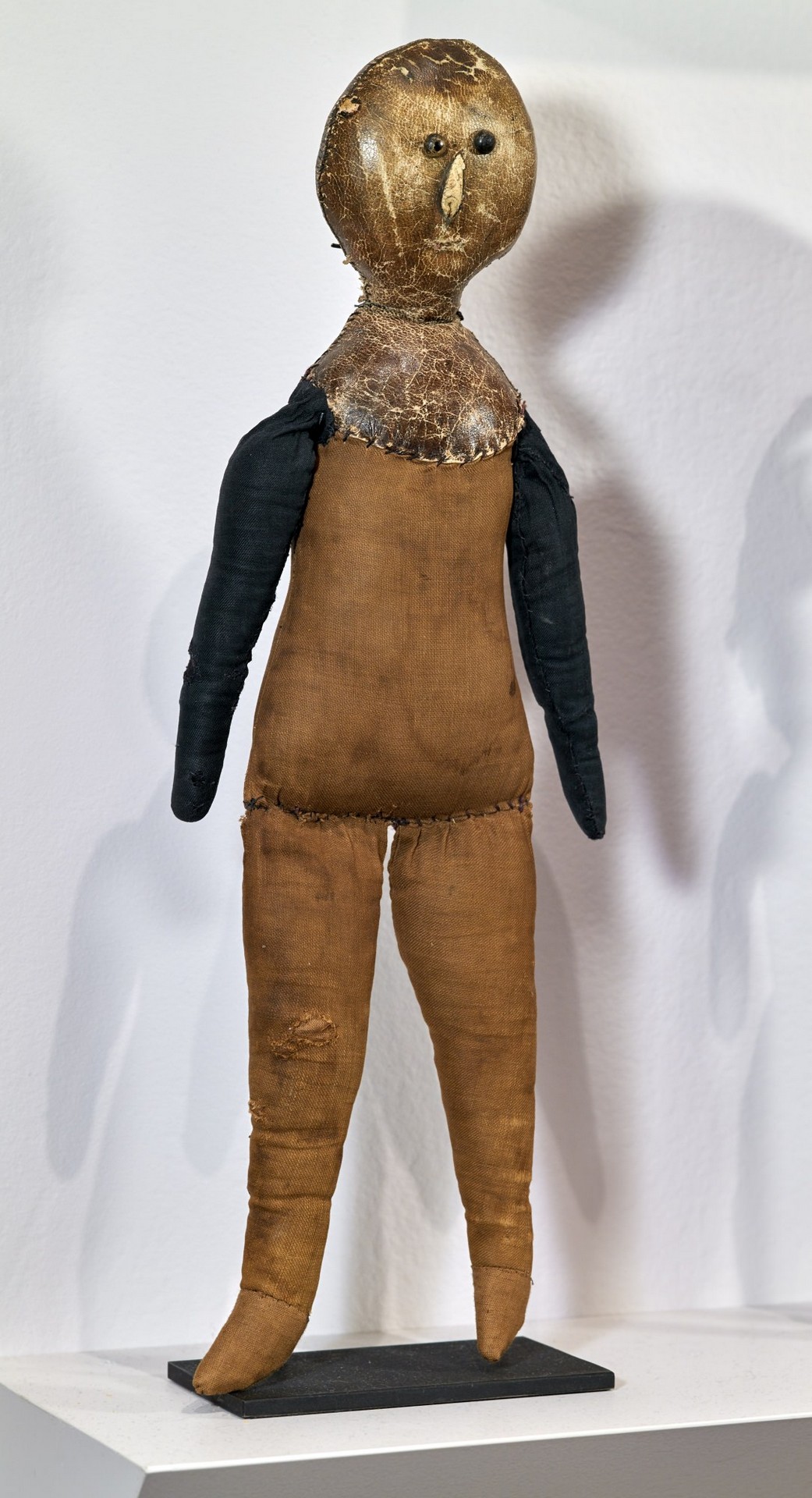
Doll with leather head, possibly Salem,
MA, late 19th century
Leather, cotton
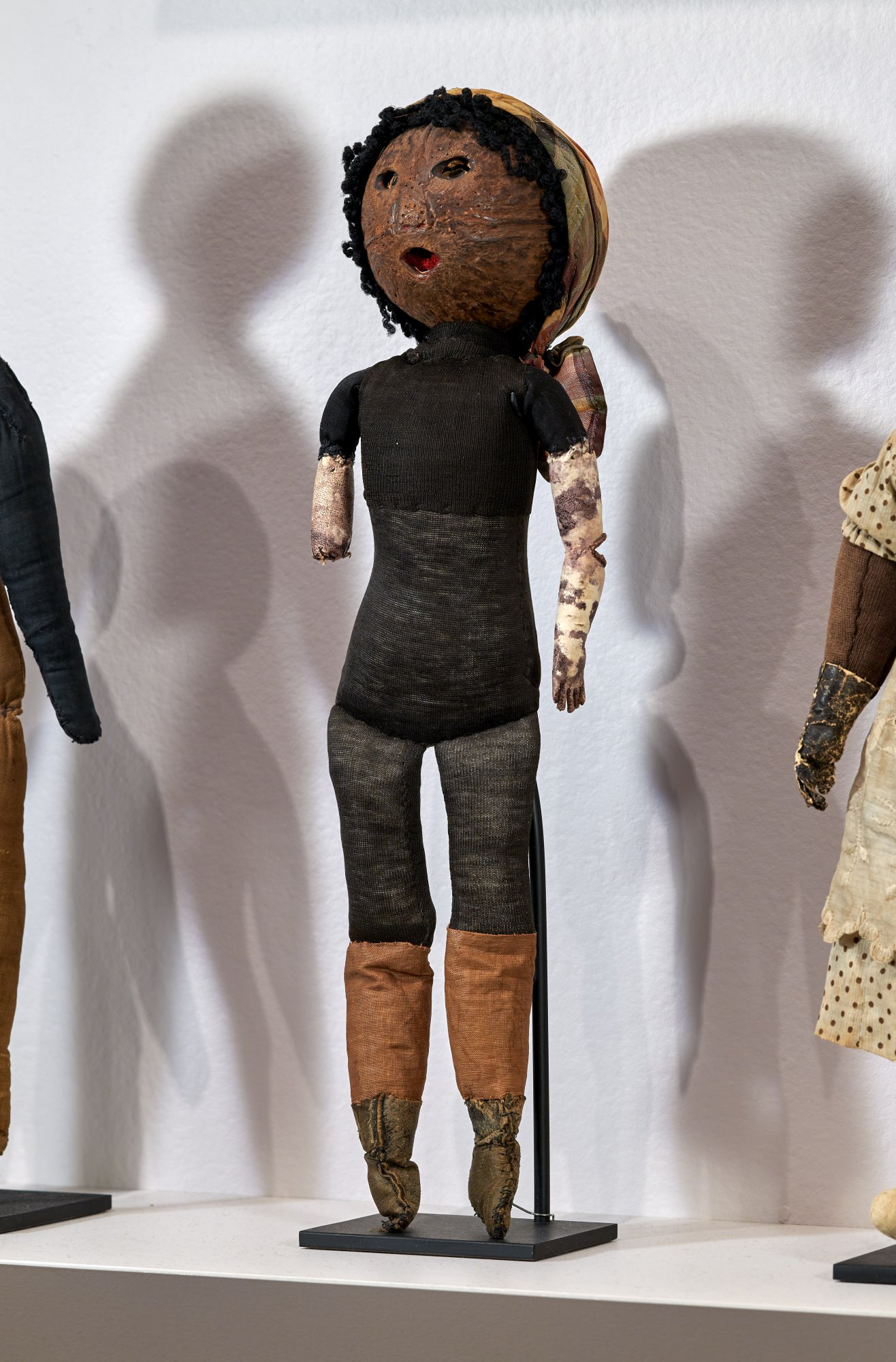
Coconut-head doll with head kerchief,
US, late 19th/early 20th centuries
Coconut shell, leather, sawdust, paper
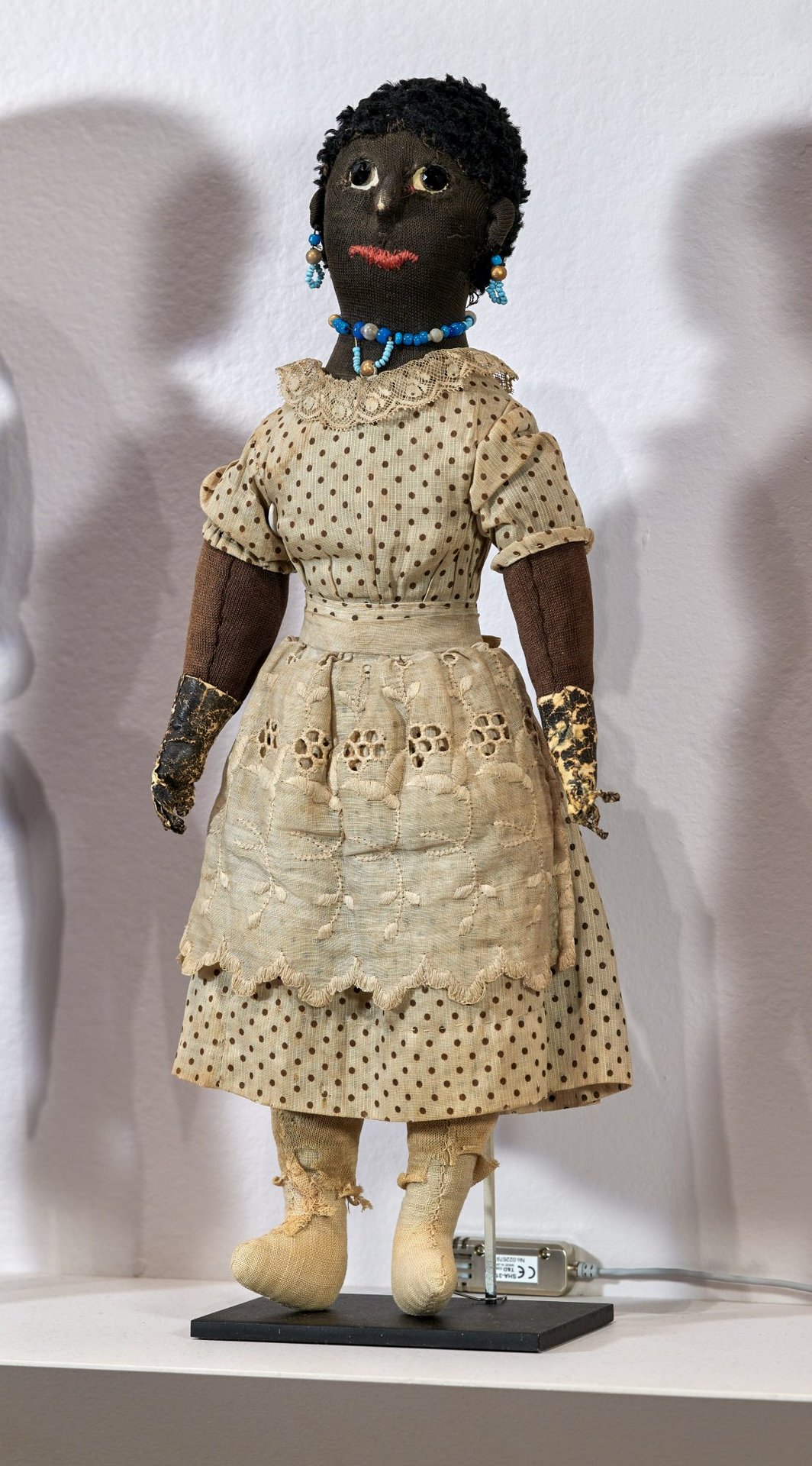
Doll with necklace and earrings,
US,
1875-1900
Mixed fabrics, glass, leather, beads
This doll wears an elegant necklace and
earrings made of beads, which held symbolic significance for African Americans.
The blue beads may have been intended to ward off evil spirits.

Doll with green necklace,
US, ca.
1880-90
Mixed fabrics, leather, beads
The maker lavished great care on this
doll’s hand-stitched dress and undergarments as well as its looped yarn wig,
sculpted nose, and embroidered facial features.

Doll with tweed pants,
US, ca. 1920-30
Mixed fabrics
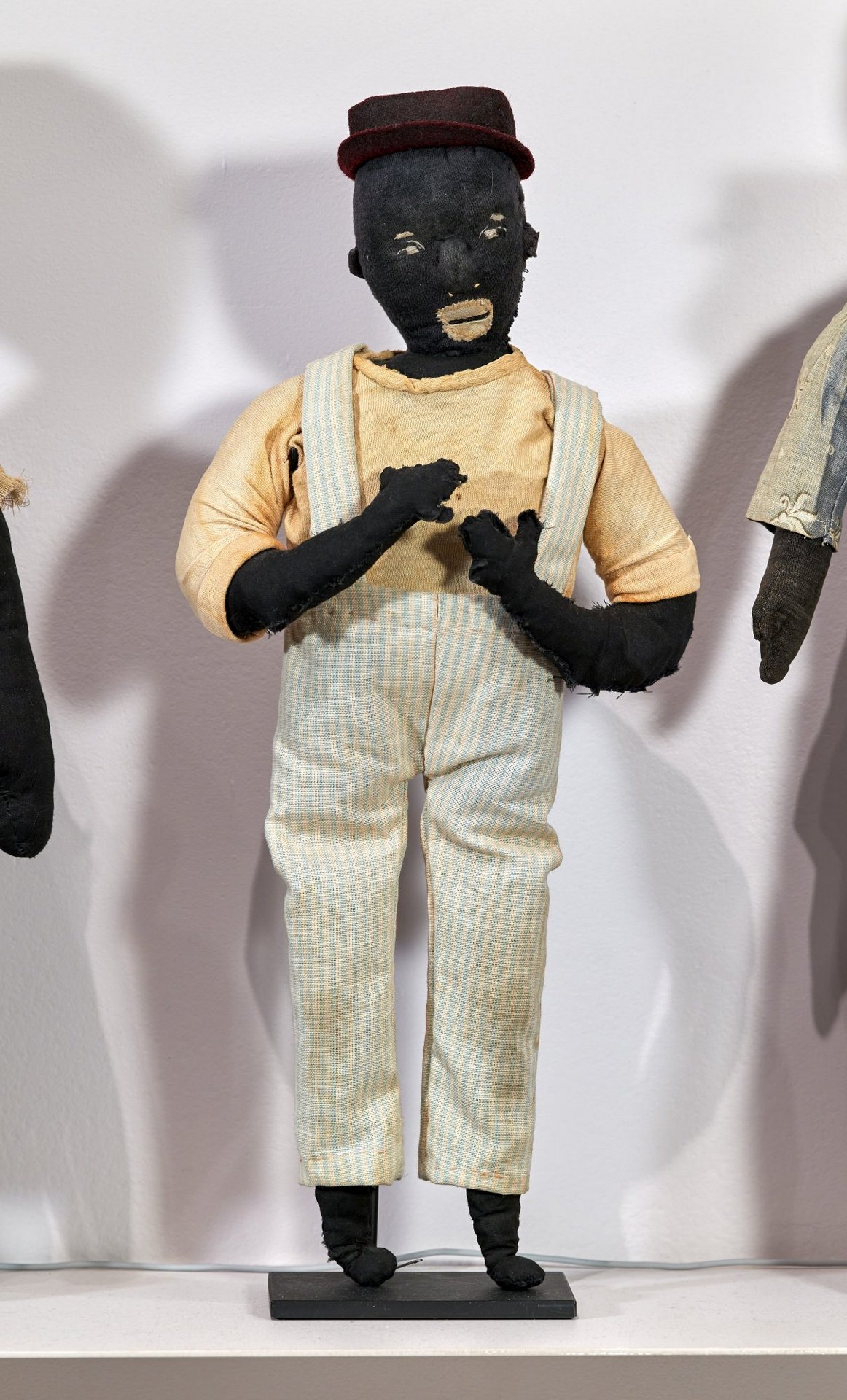
Doll with hat,
US, 1900-25
Mixed fabrics
A jaunty
pork pie hat and suspender pants give this doll lots of character.
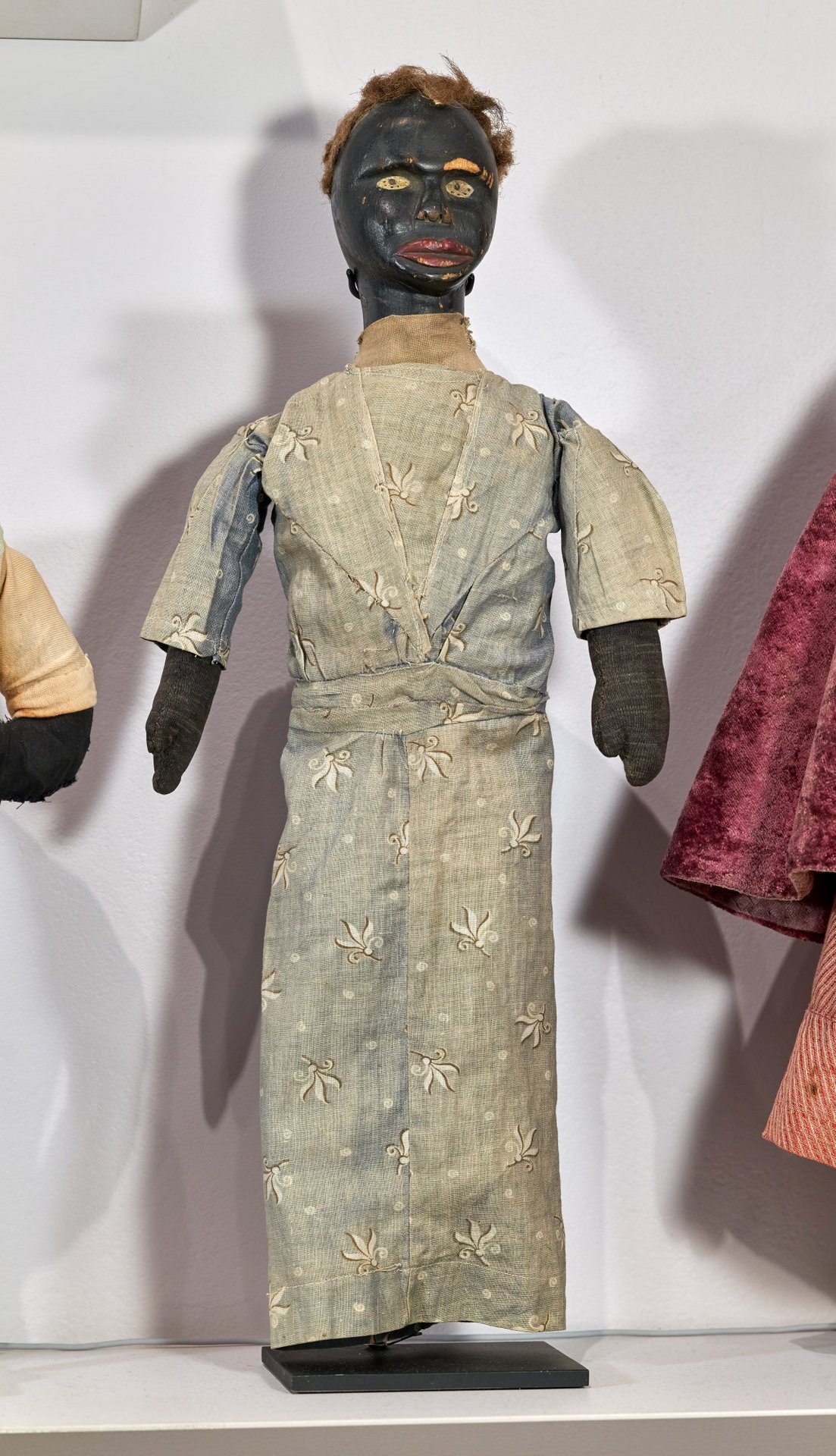
Doll with carved head,
US, ca. 1900
Wood, mixed fabrics, paint

Doll with velvet cape,
US, late 19th
century
Mixed fabrics, leather, mother of pear
l
Stitched by a skilled seamstress, this
doll wears a full
complement of period-appropriate undergarments: lace-trimmed
chemise, drawers, and three petticoats. Its maker had access to expensive
fabrics, including luxurious crushed velvet used for the cape.

Doll in white dress,
possibly Cape Cod,
MA,
ca. 1905
Mixed fabrics

Doll in gray dress,
US, early 20th
century
Mixed fabrics
This doll’s gray tufted mohair wig gives
her the look of an older woman. She wears a dress made from repurposed mourning
fabric, brightened by a vivid red sash.

Doll in white dress,
US, ca. 1890-1910
Cotton
The maker used a padded sock for the
doll’s hair, giving the effect of cornrows.
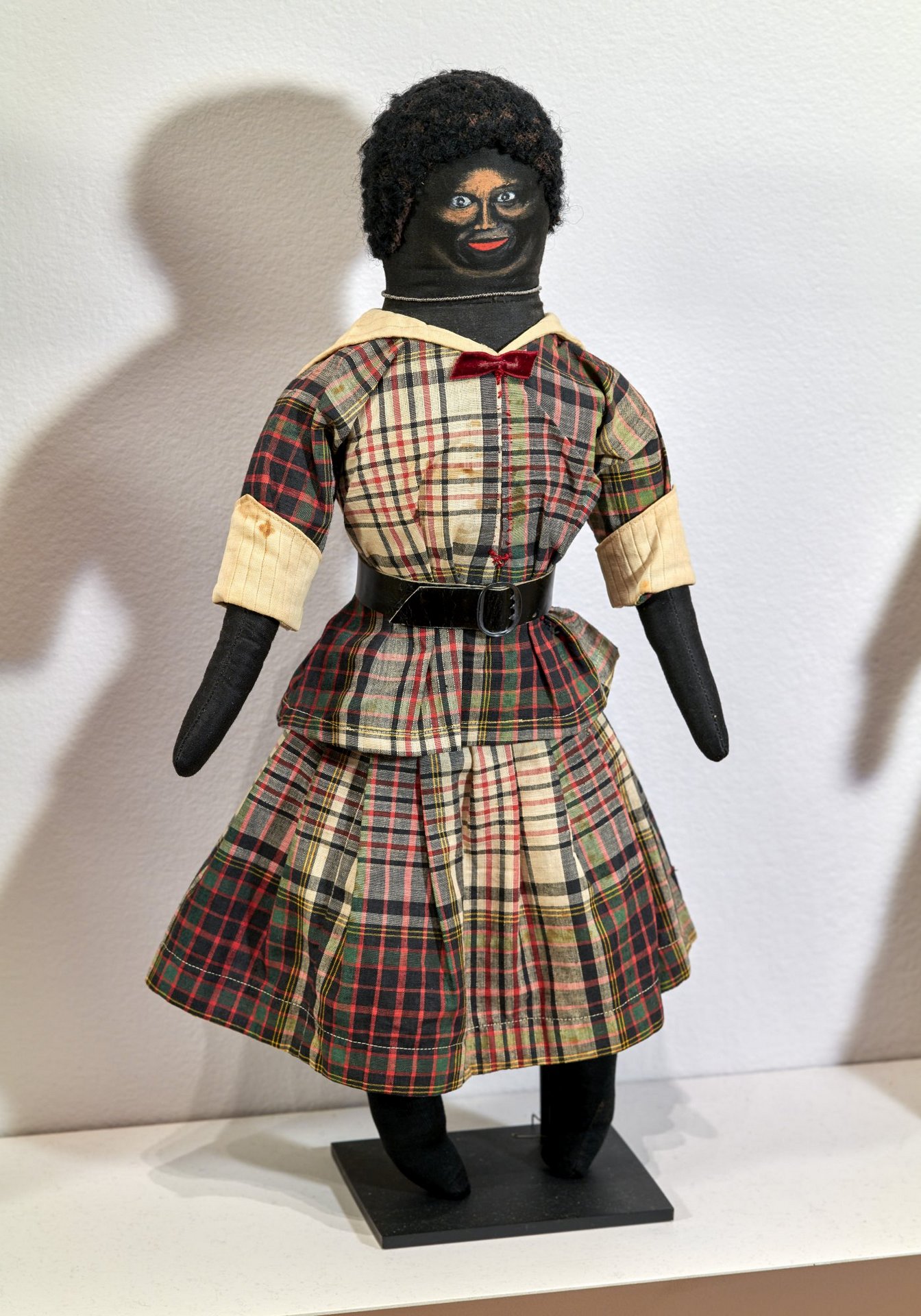
Doll in plaid dress,
US, late 19th/early
20th
centuries
Mixed fabrics, metal
The doll’s schoolgirl attire is at odds
with the stern, mature expression on its painted face.
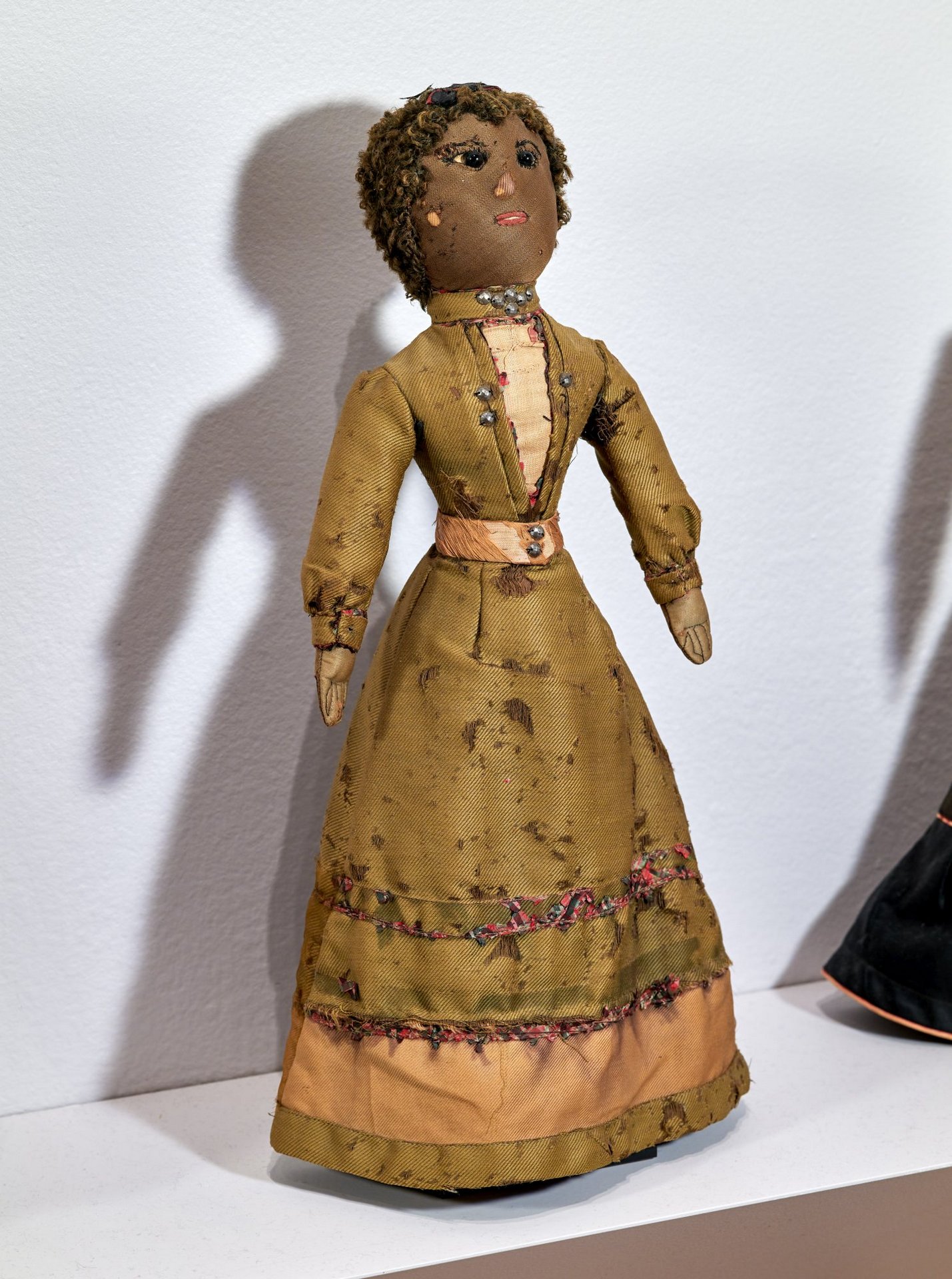
Doll in brown skirt,
US, ca. 1890-1900
Mixed fabrics, metal
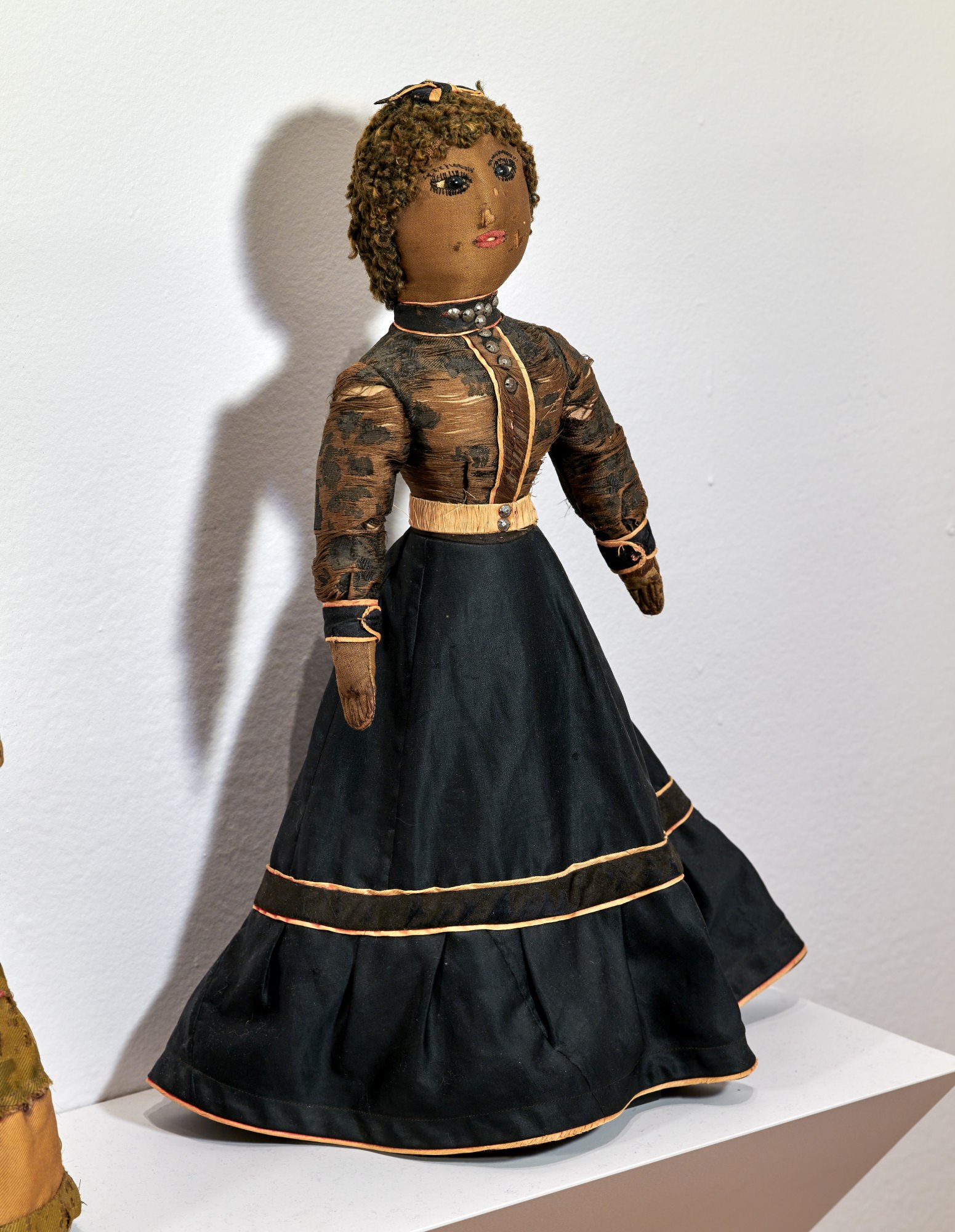
Doll in blue skirt,
US, ca. 1890-1900
Mixed fabrics, metal
The same hand stitched these two
fashionable women in umbrella skirts, a style popular during the 1890s.
Watch artisan Cozbi Cabrera as she crafts cloth dolls by hand.
Each one is unique and exquisitely detailed.
